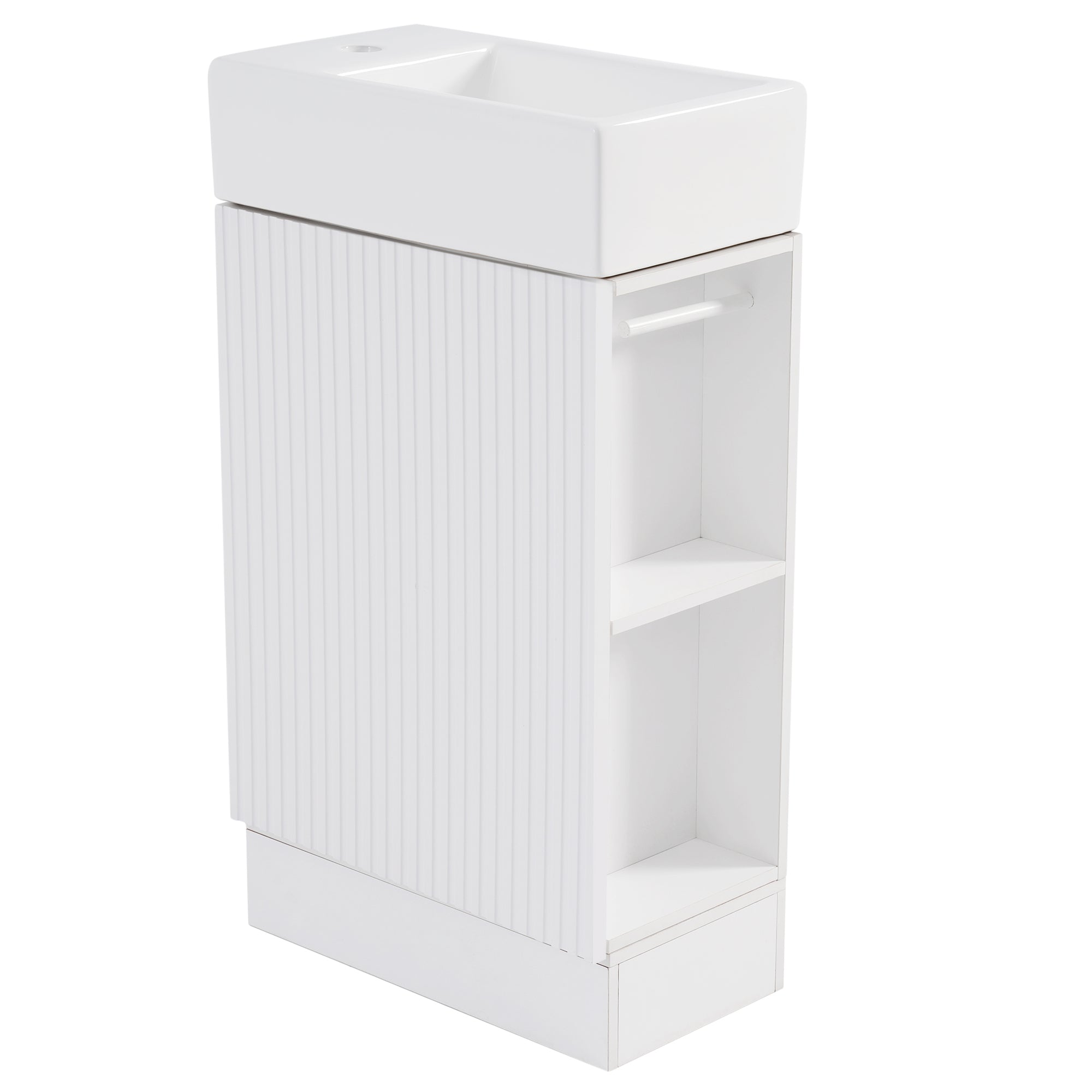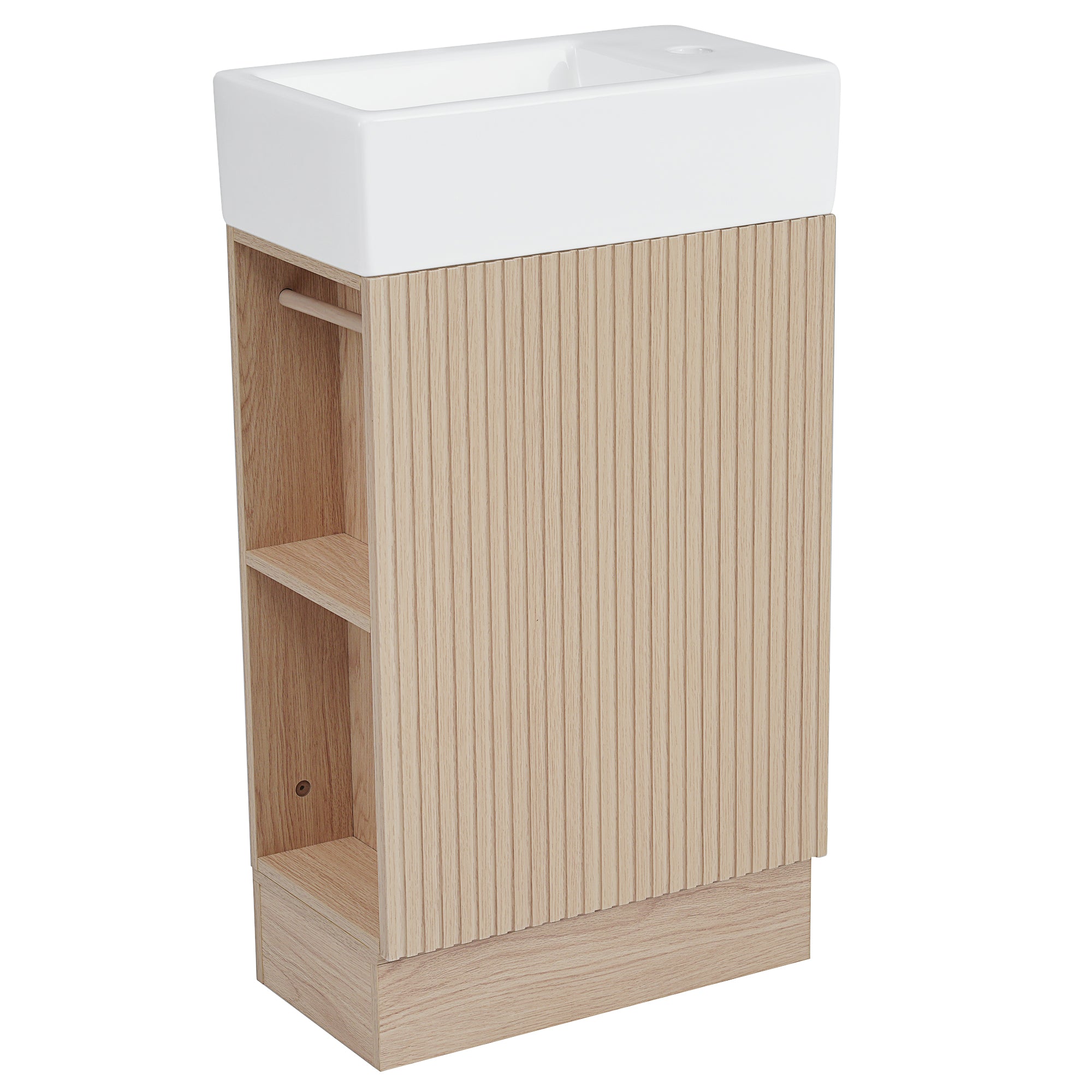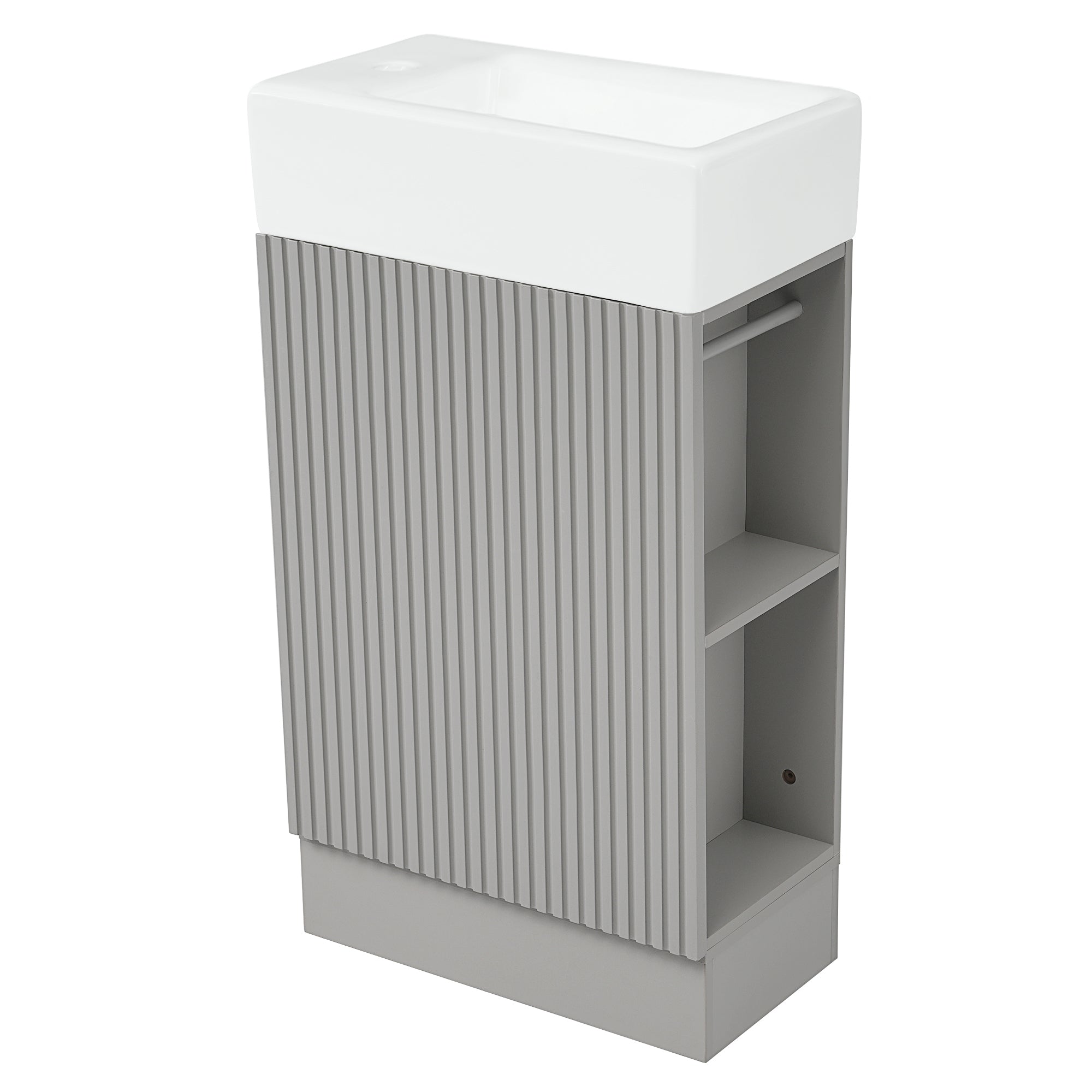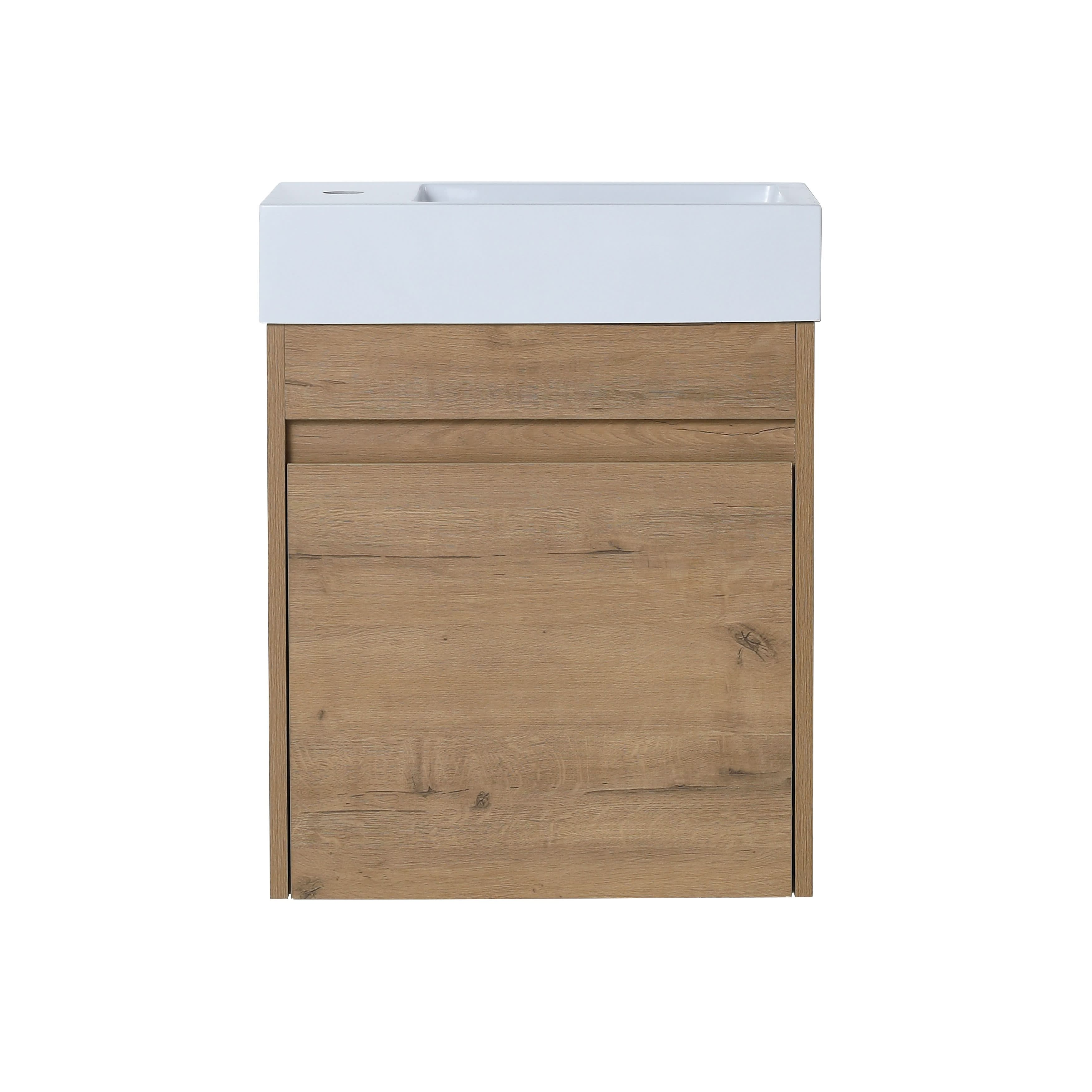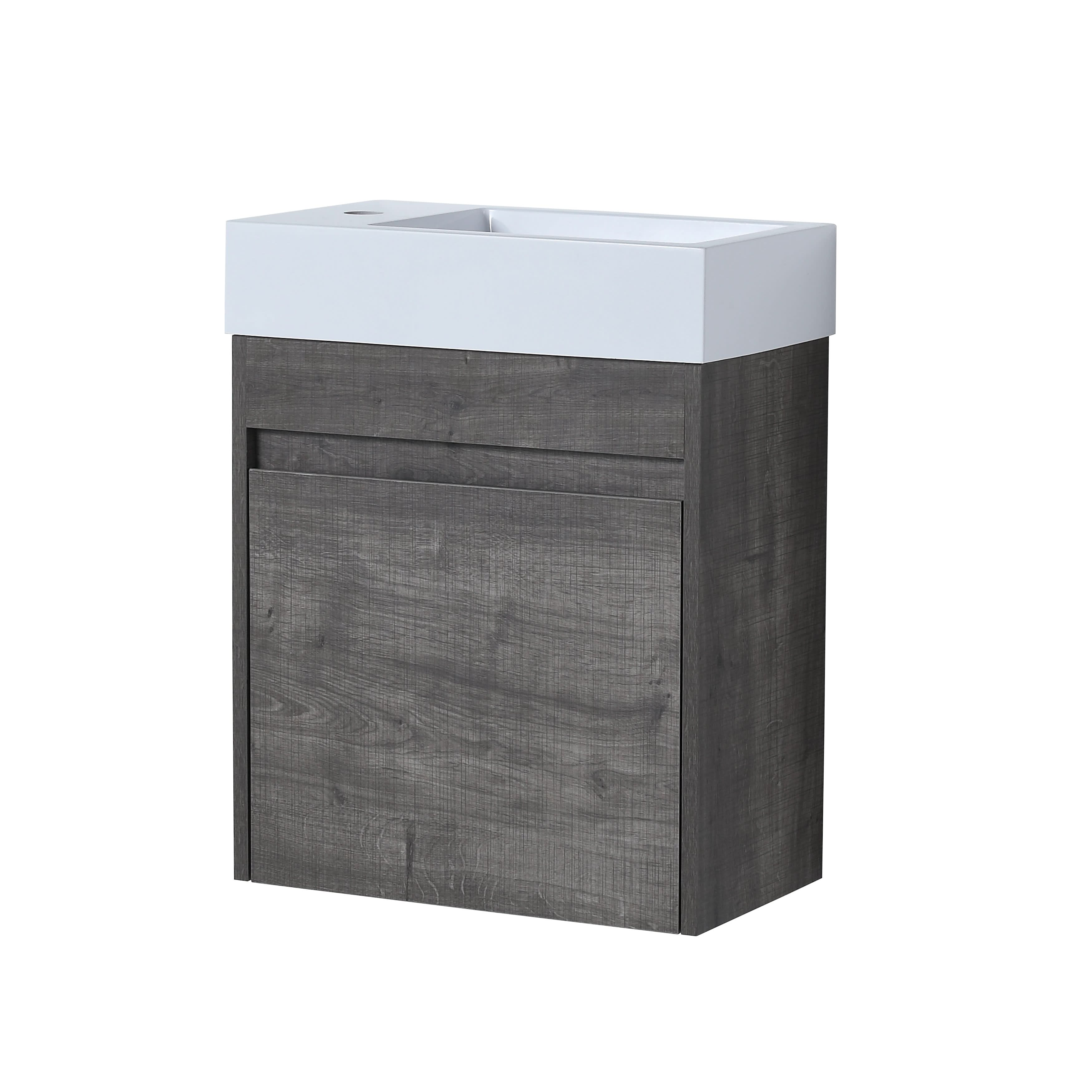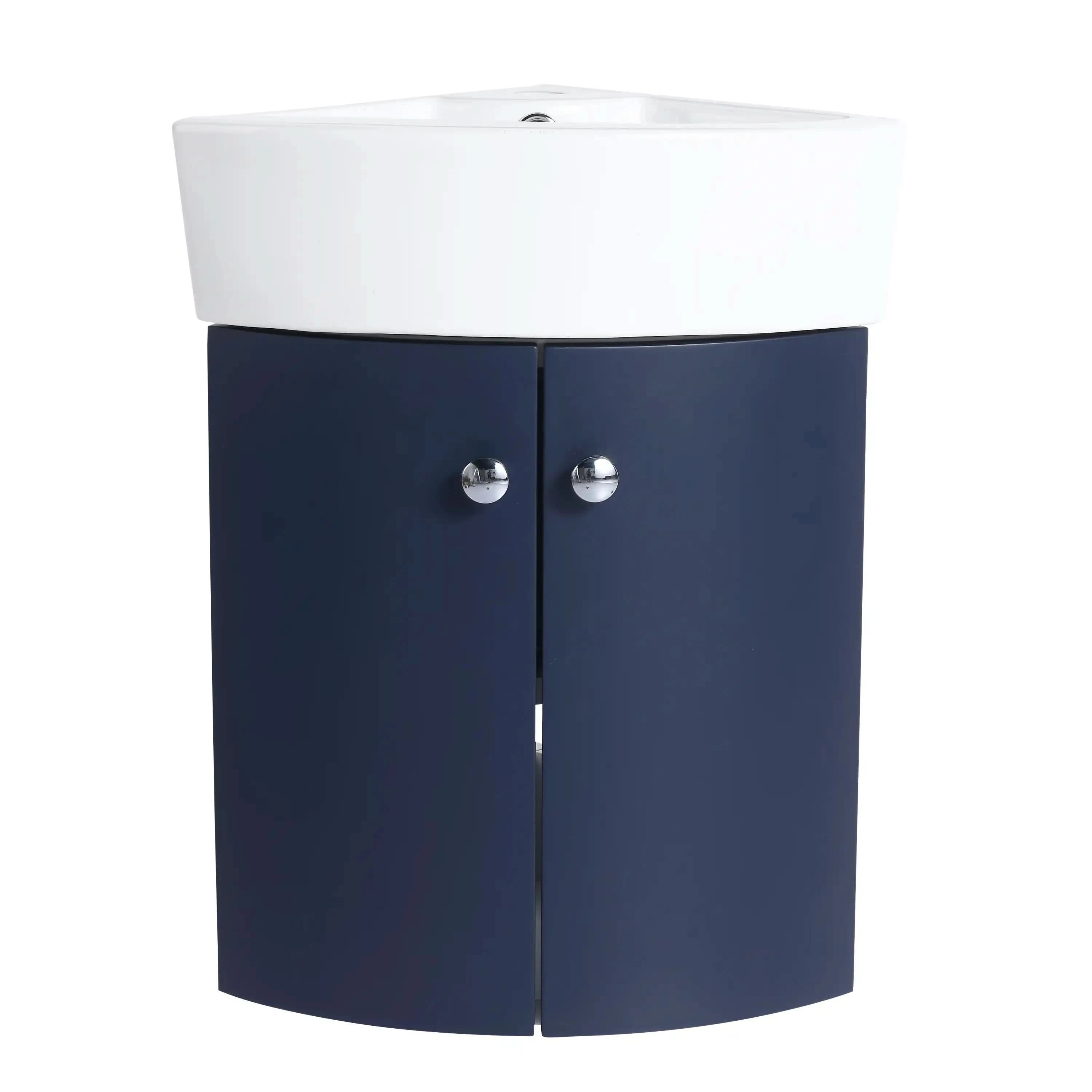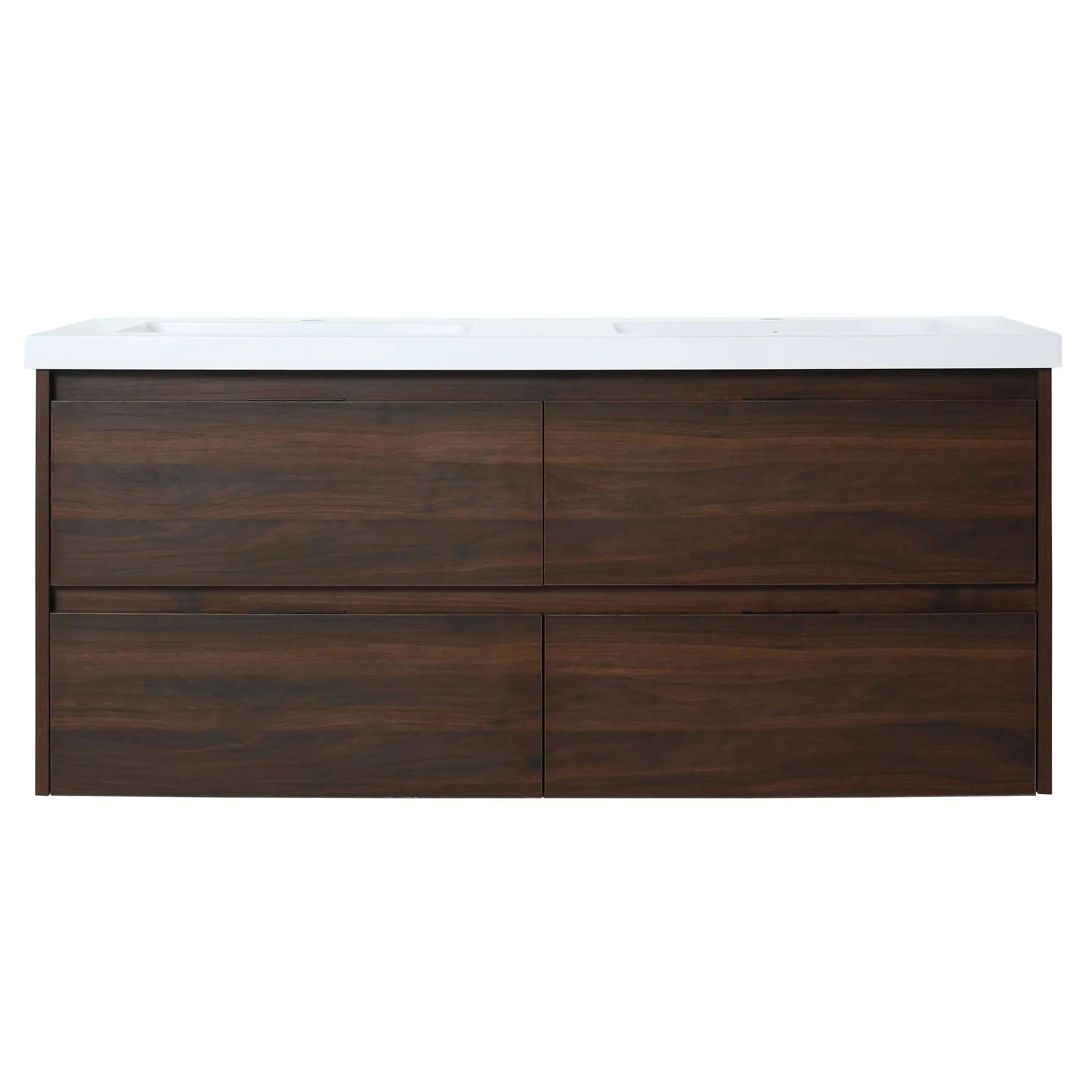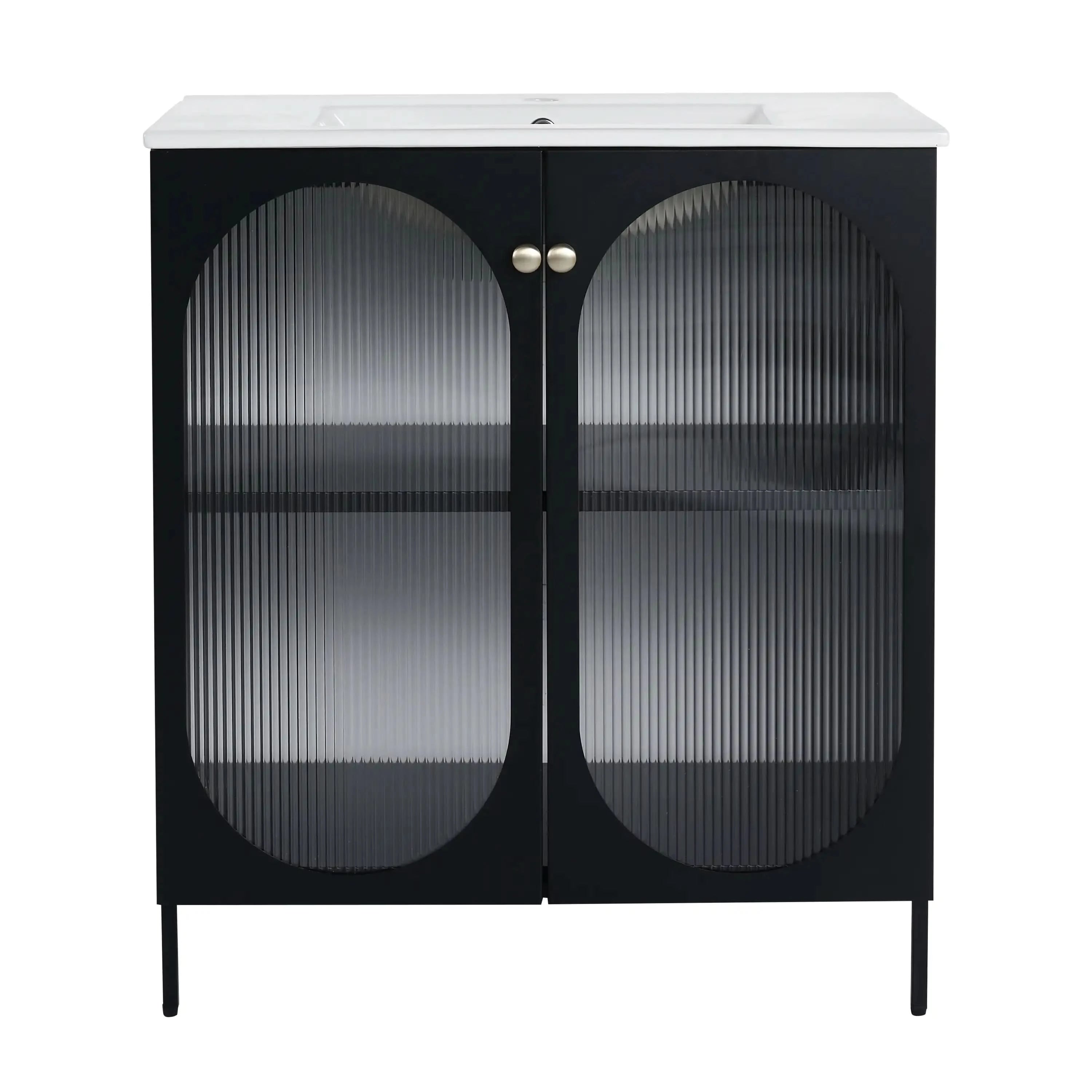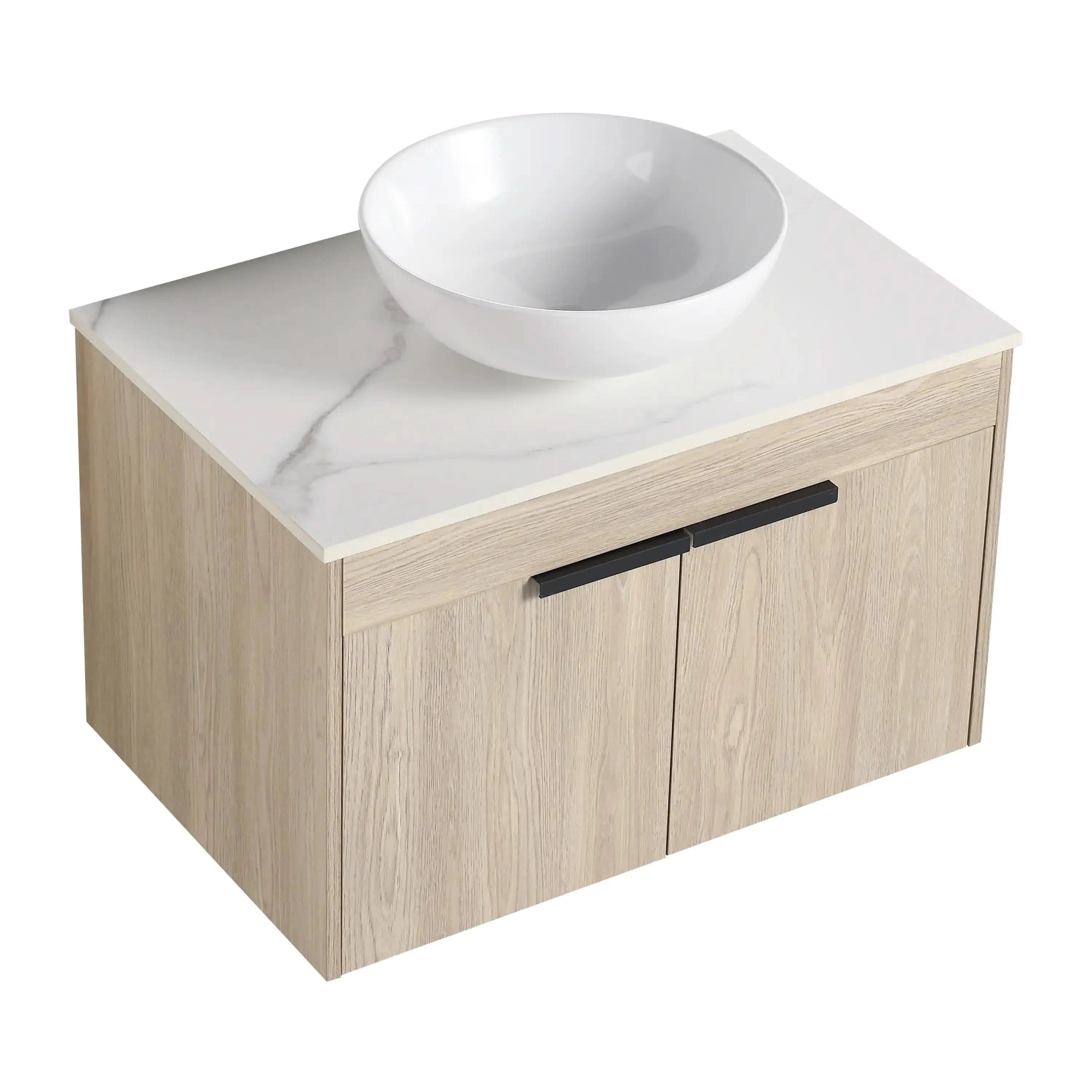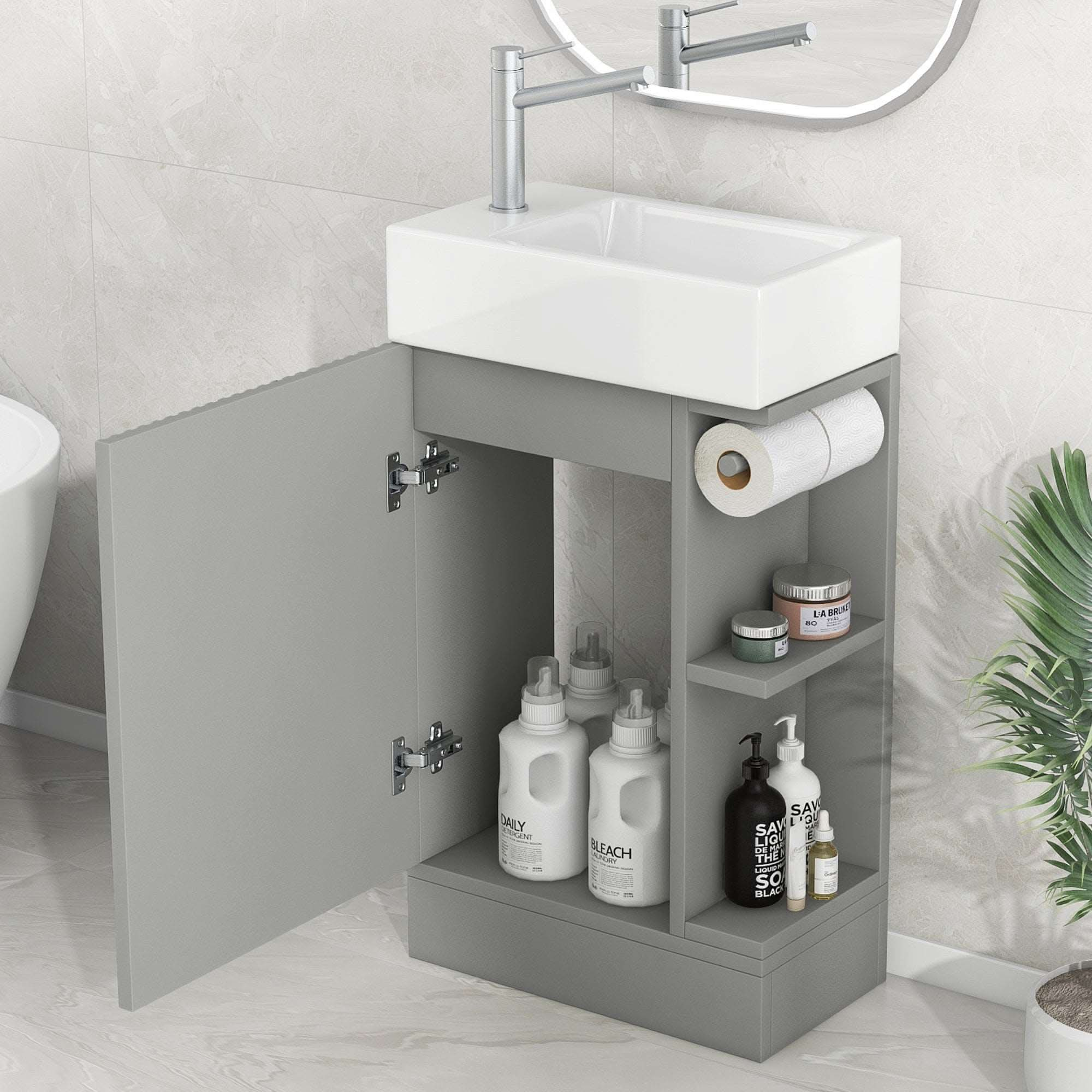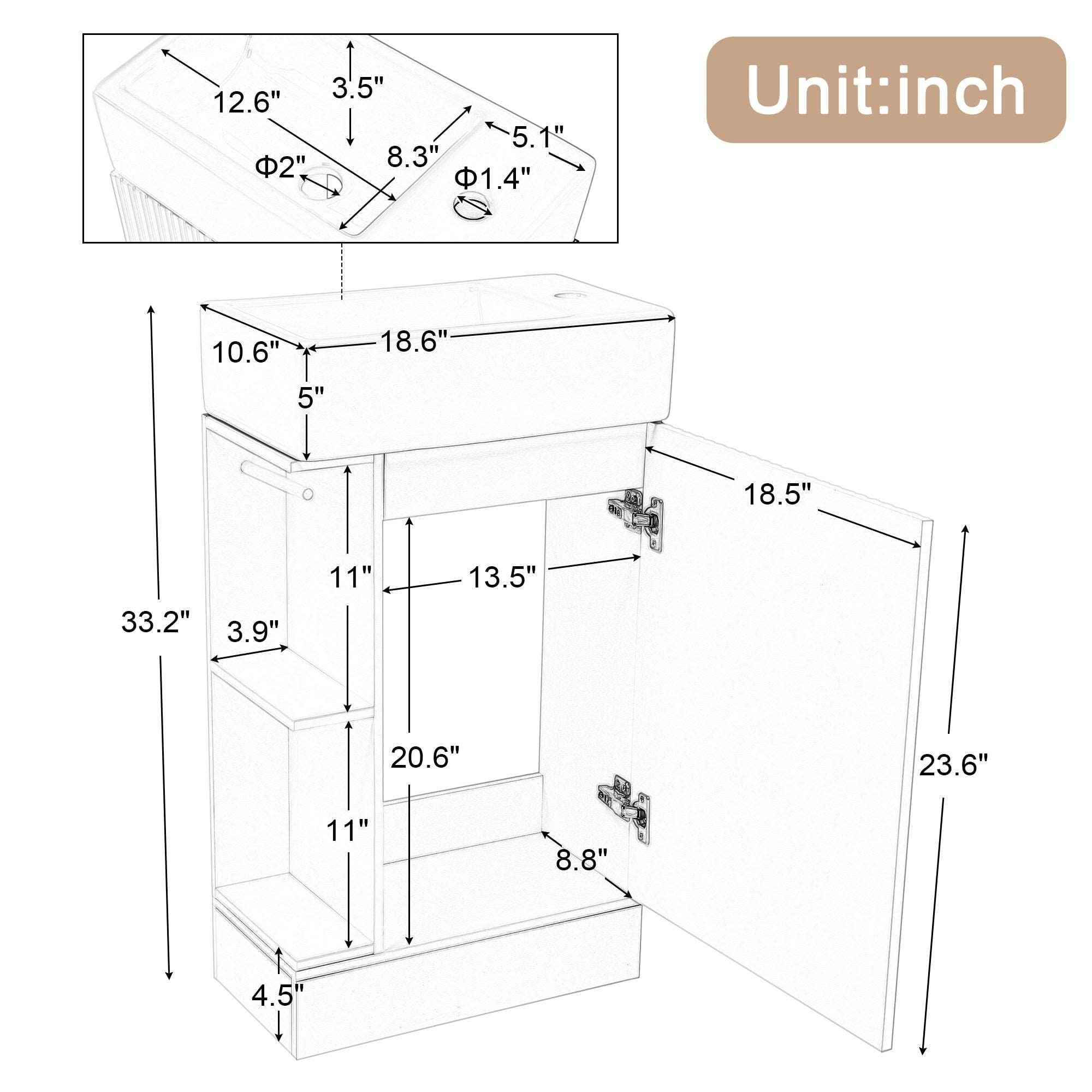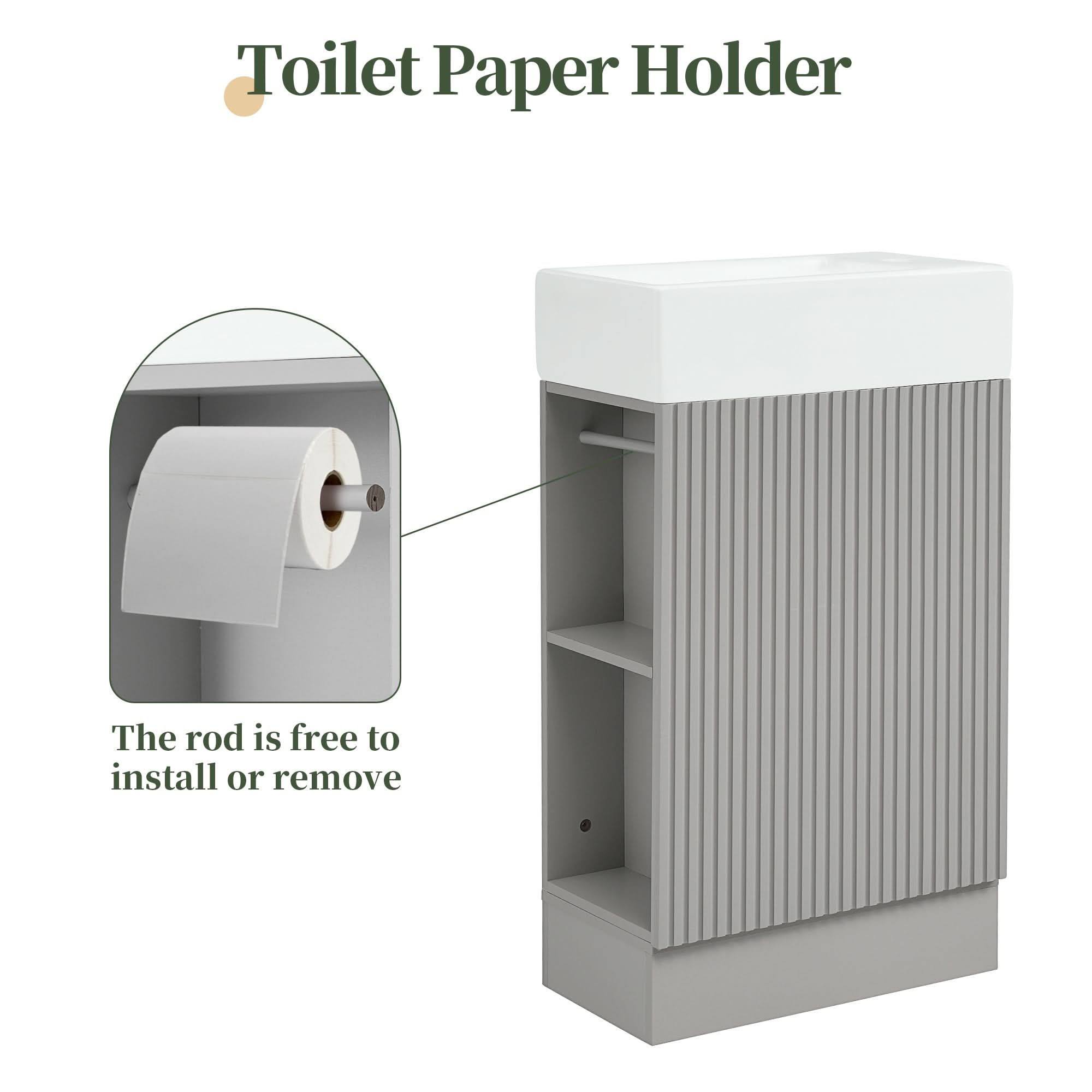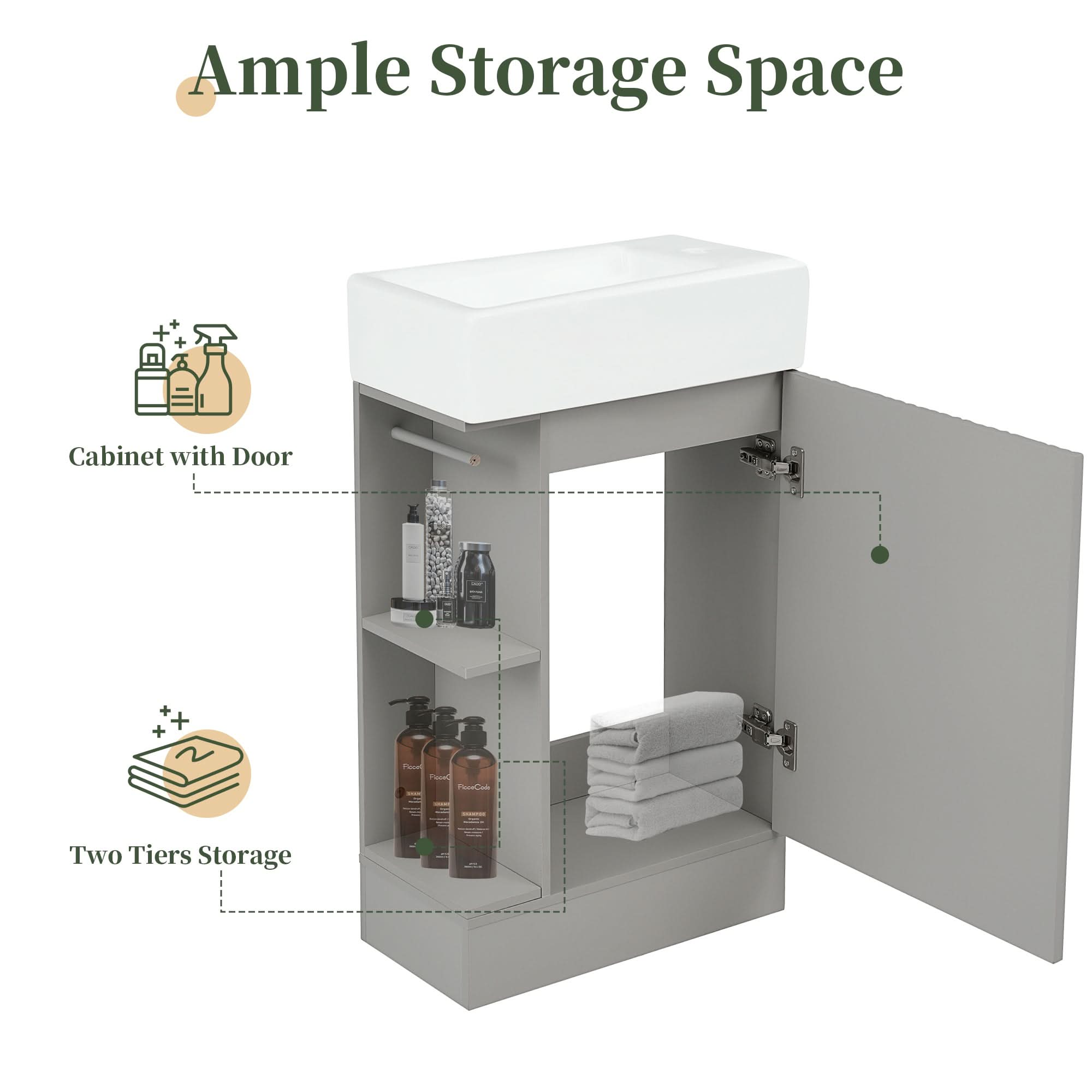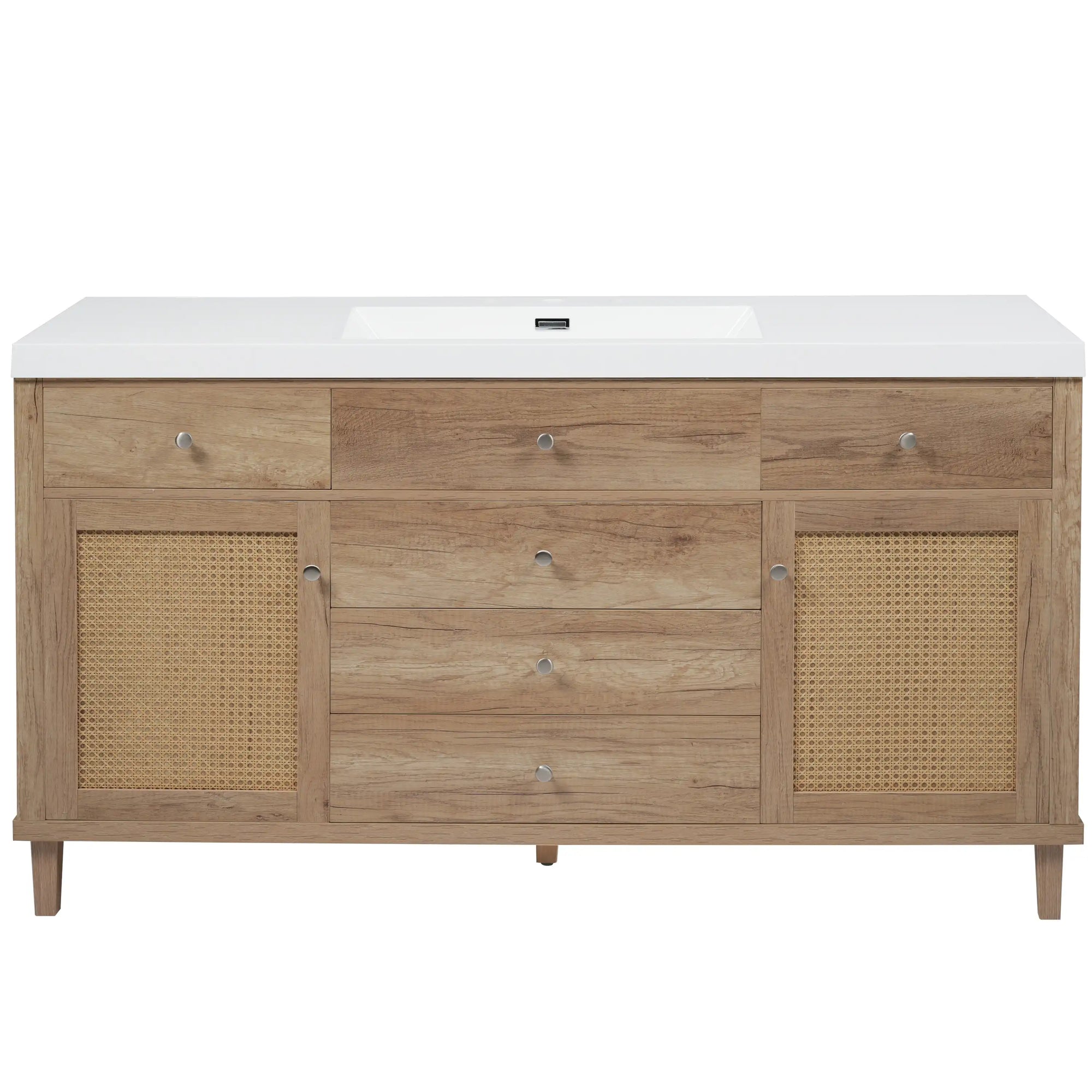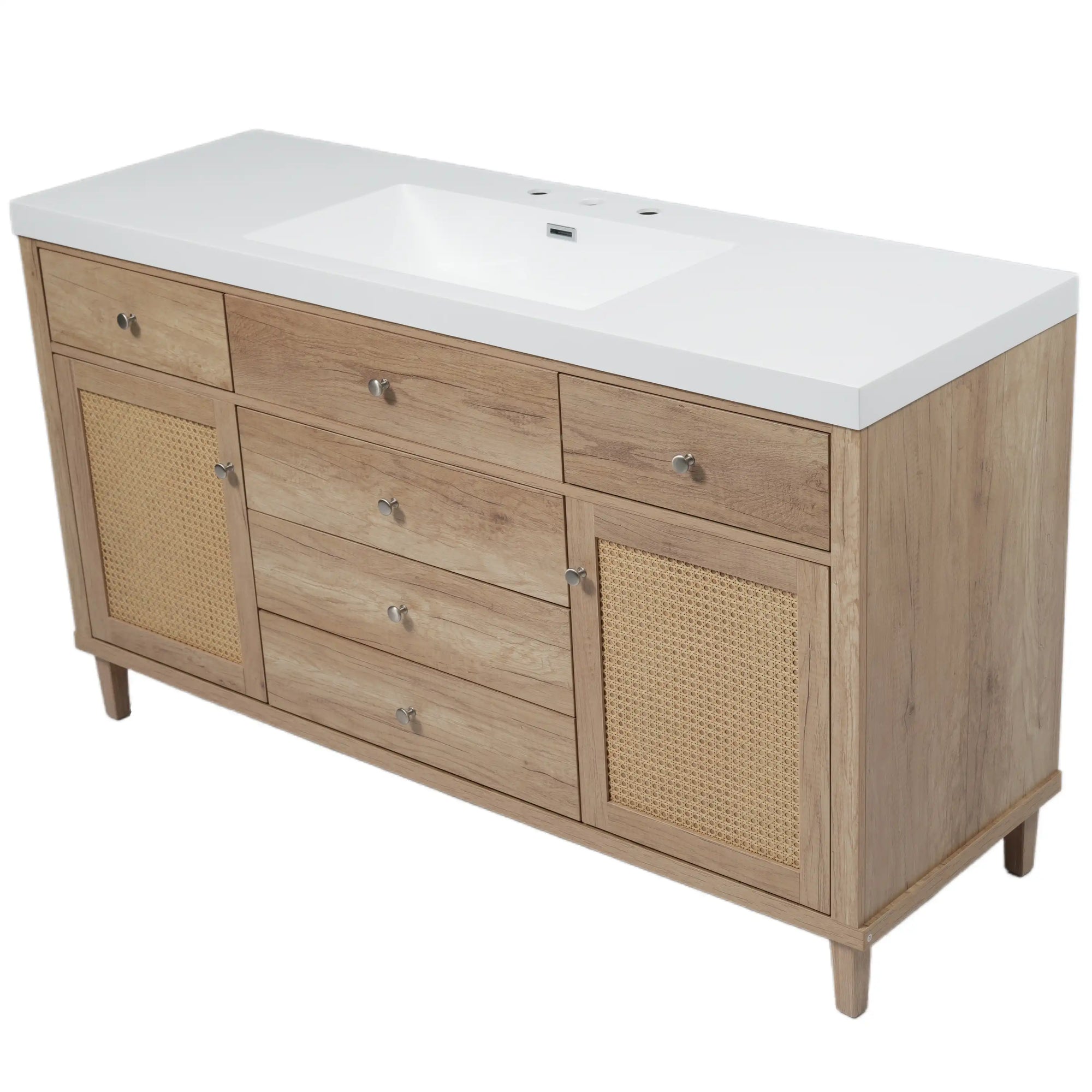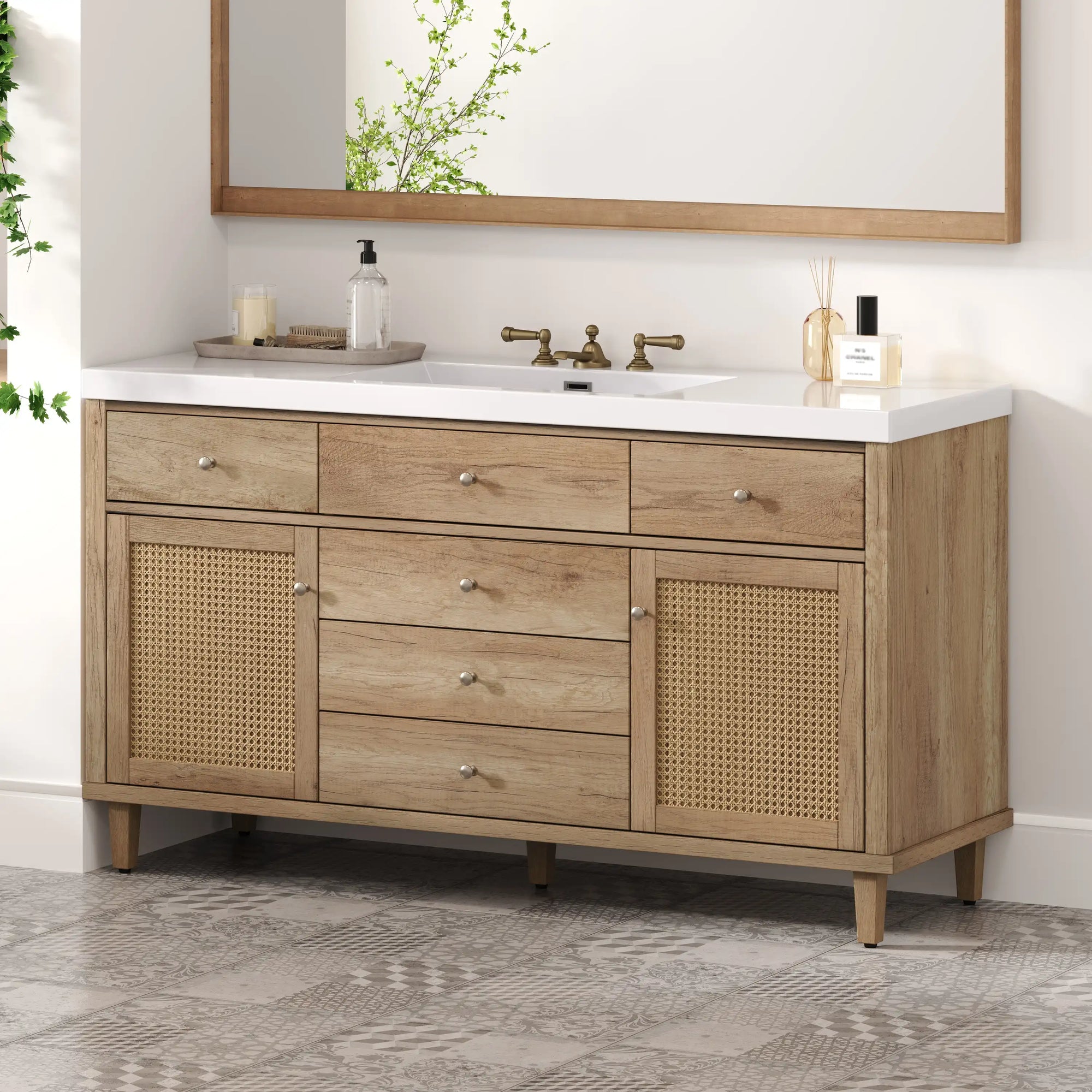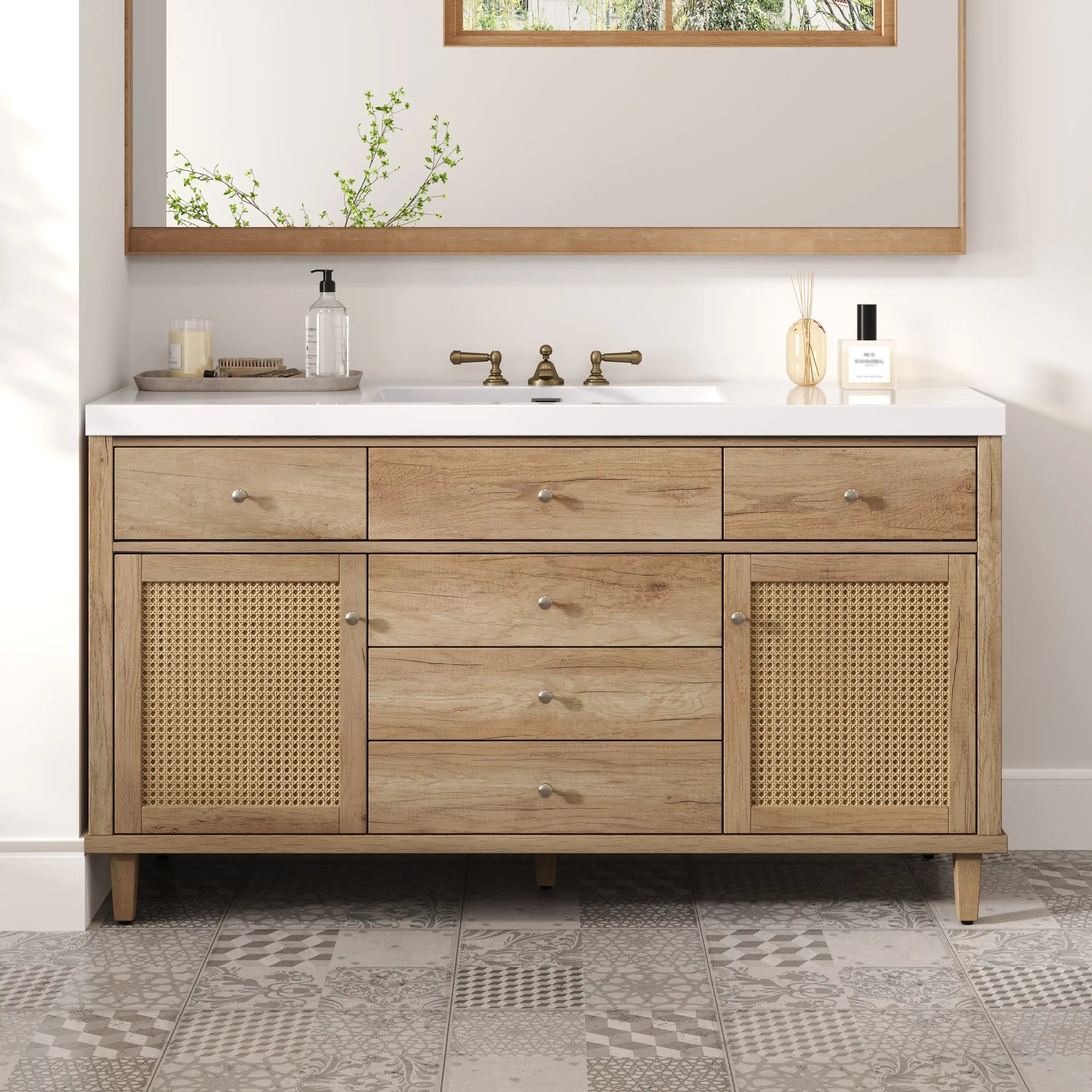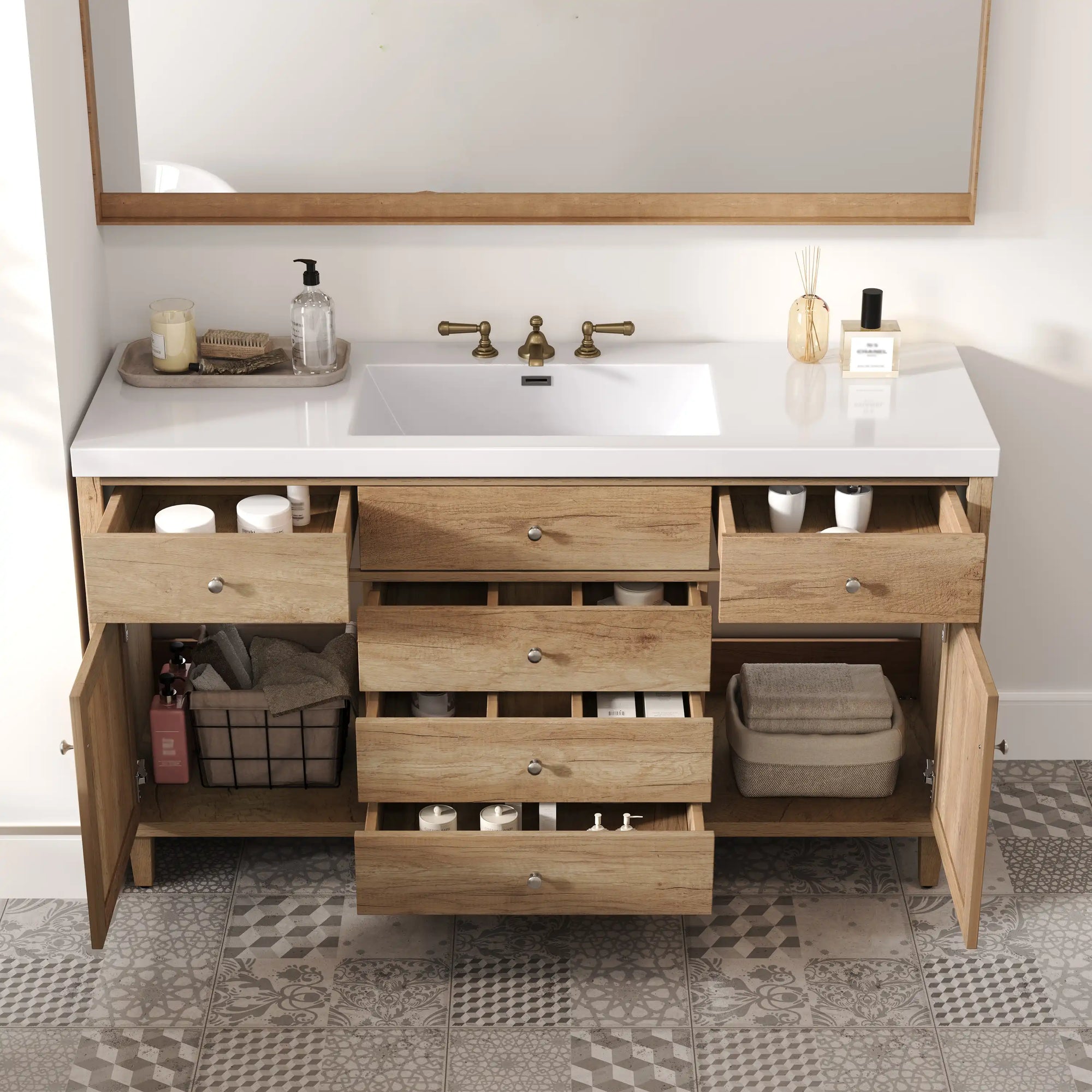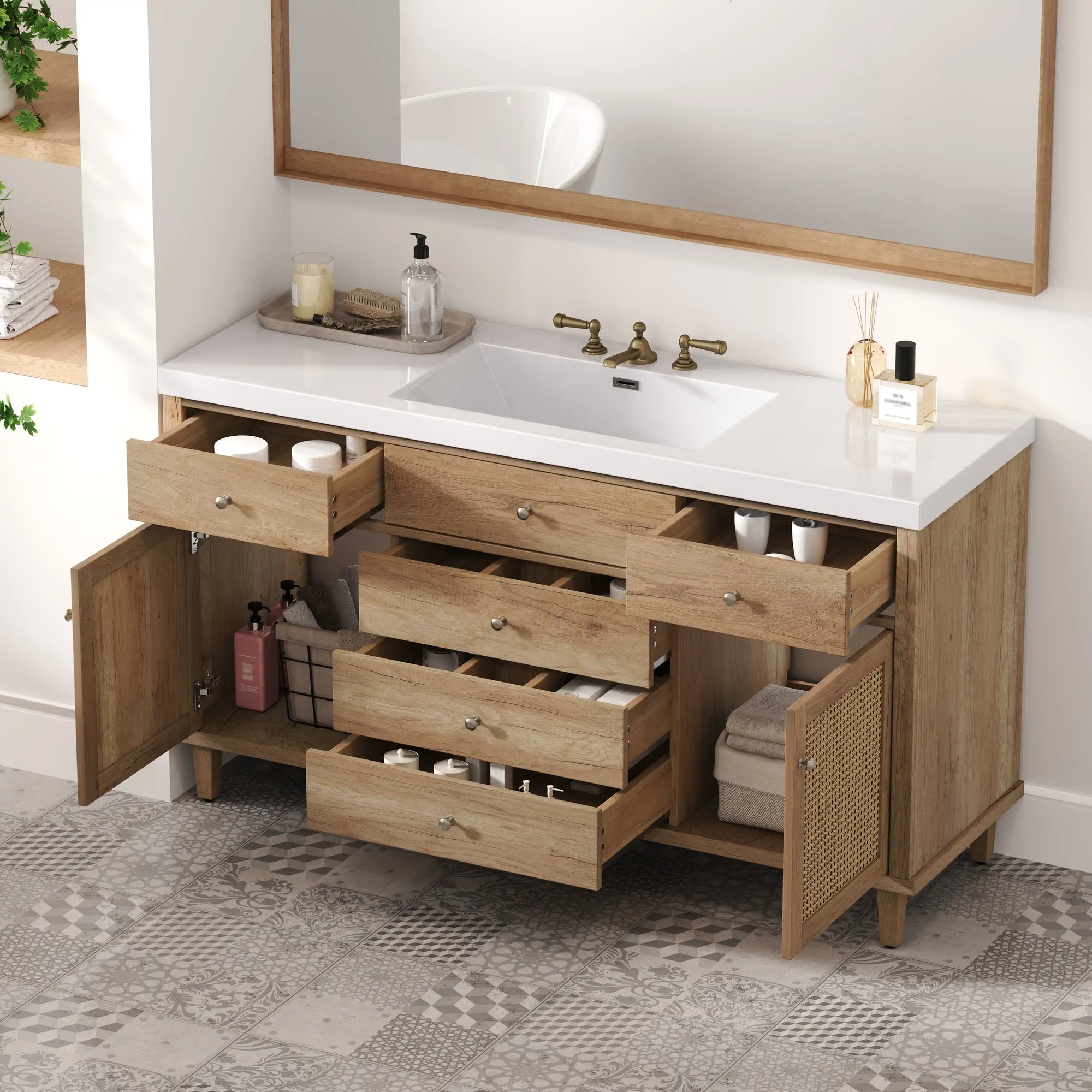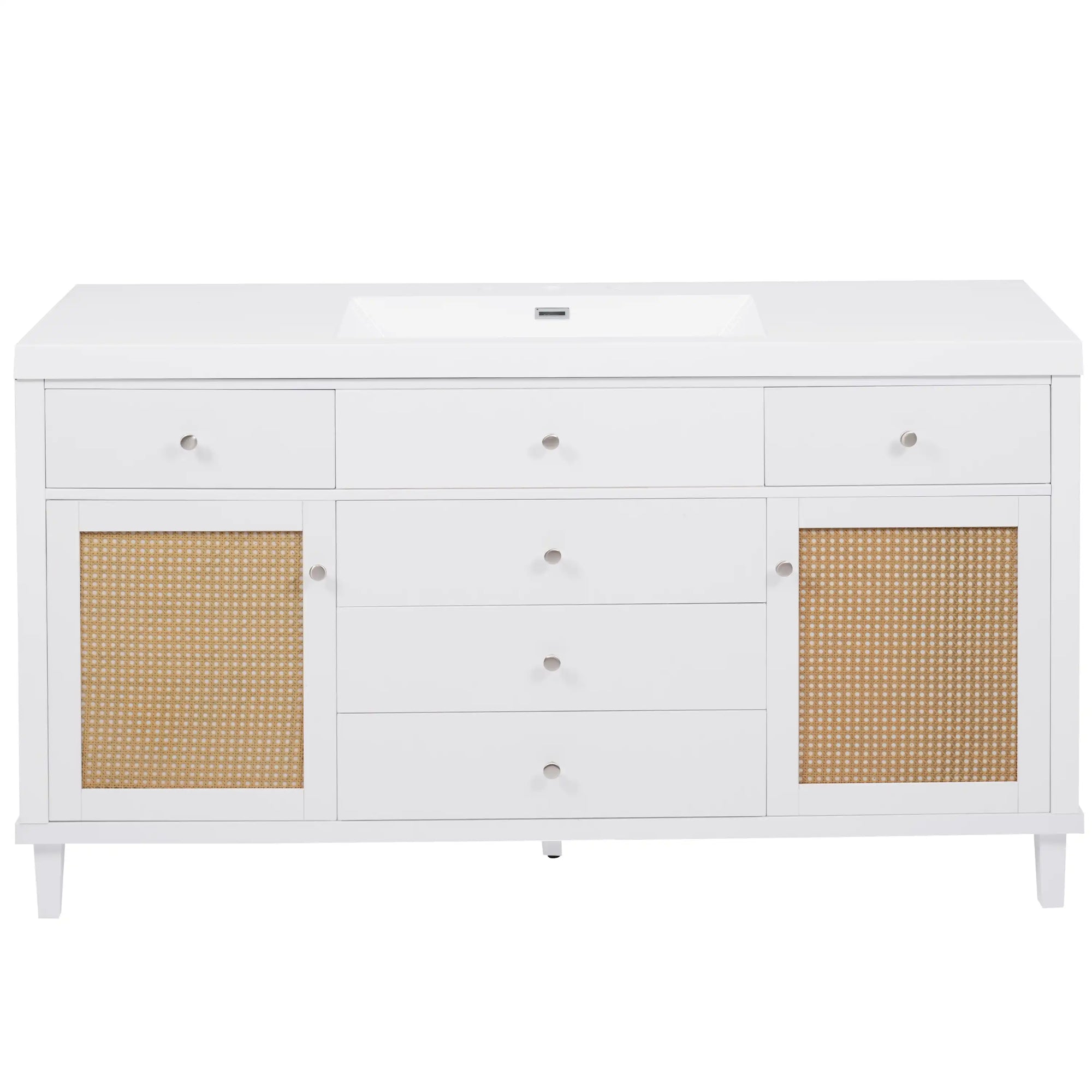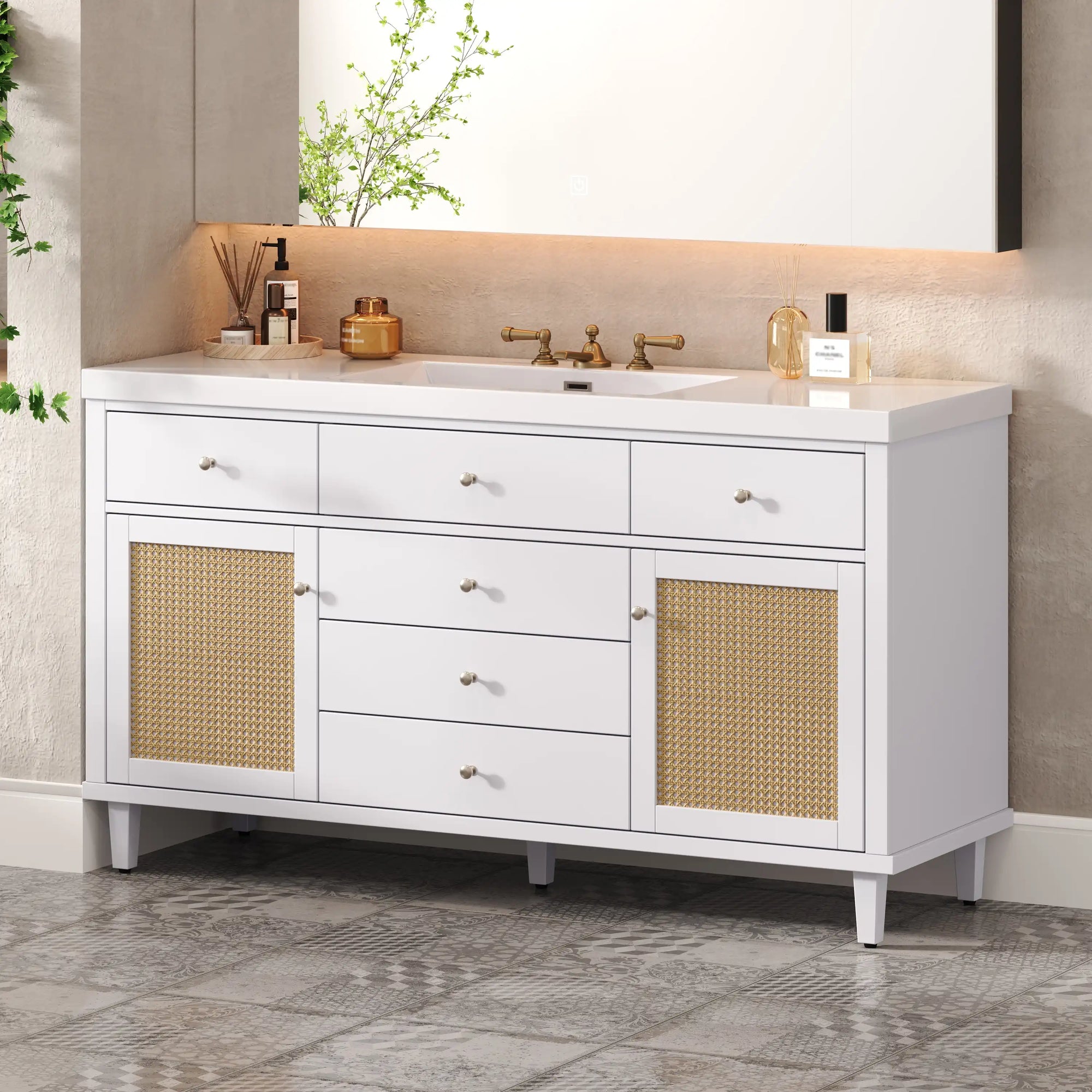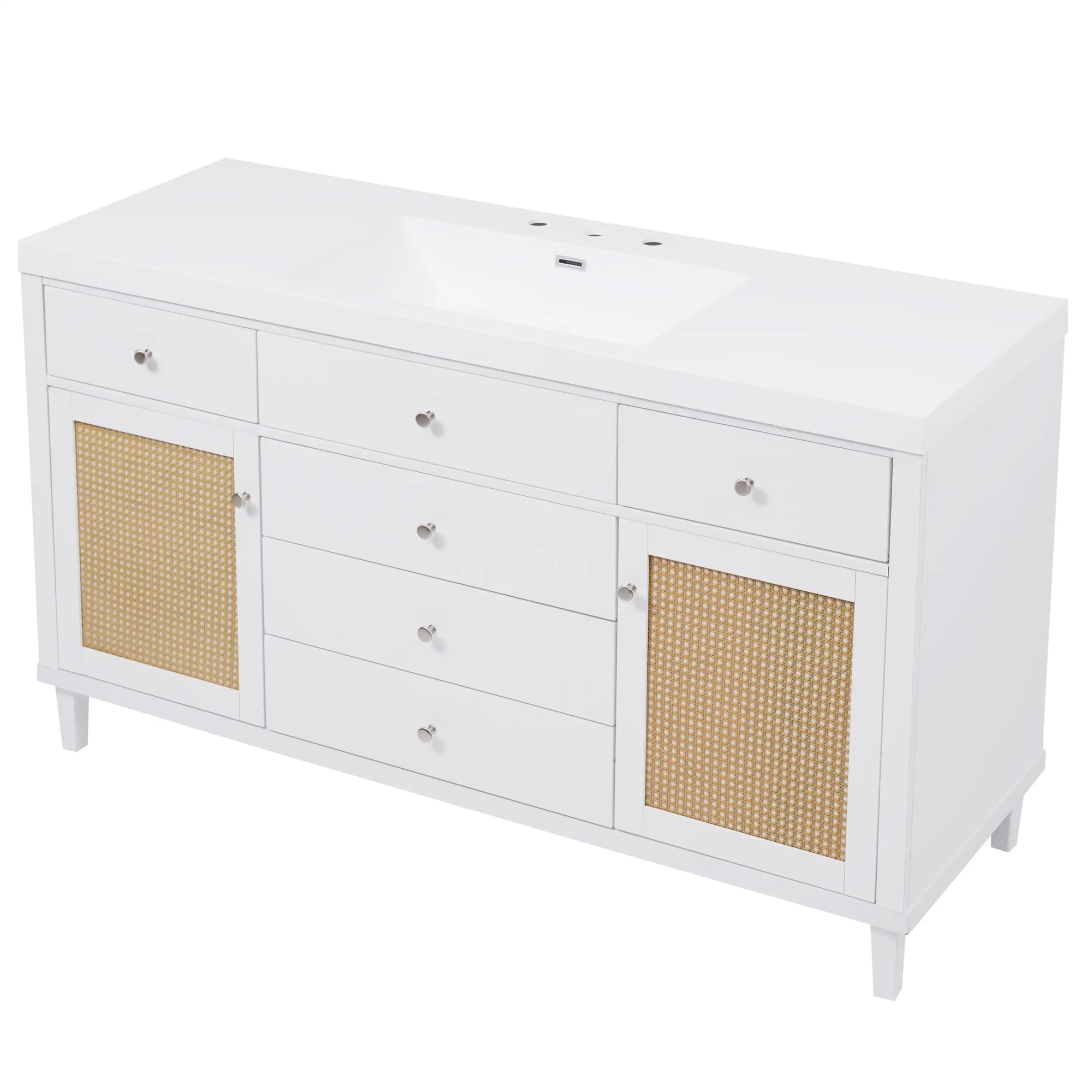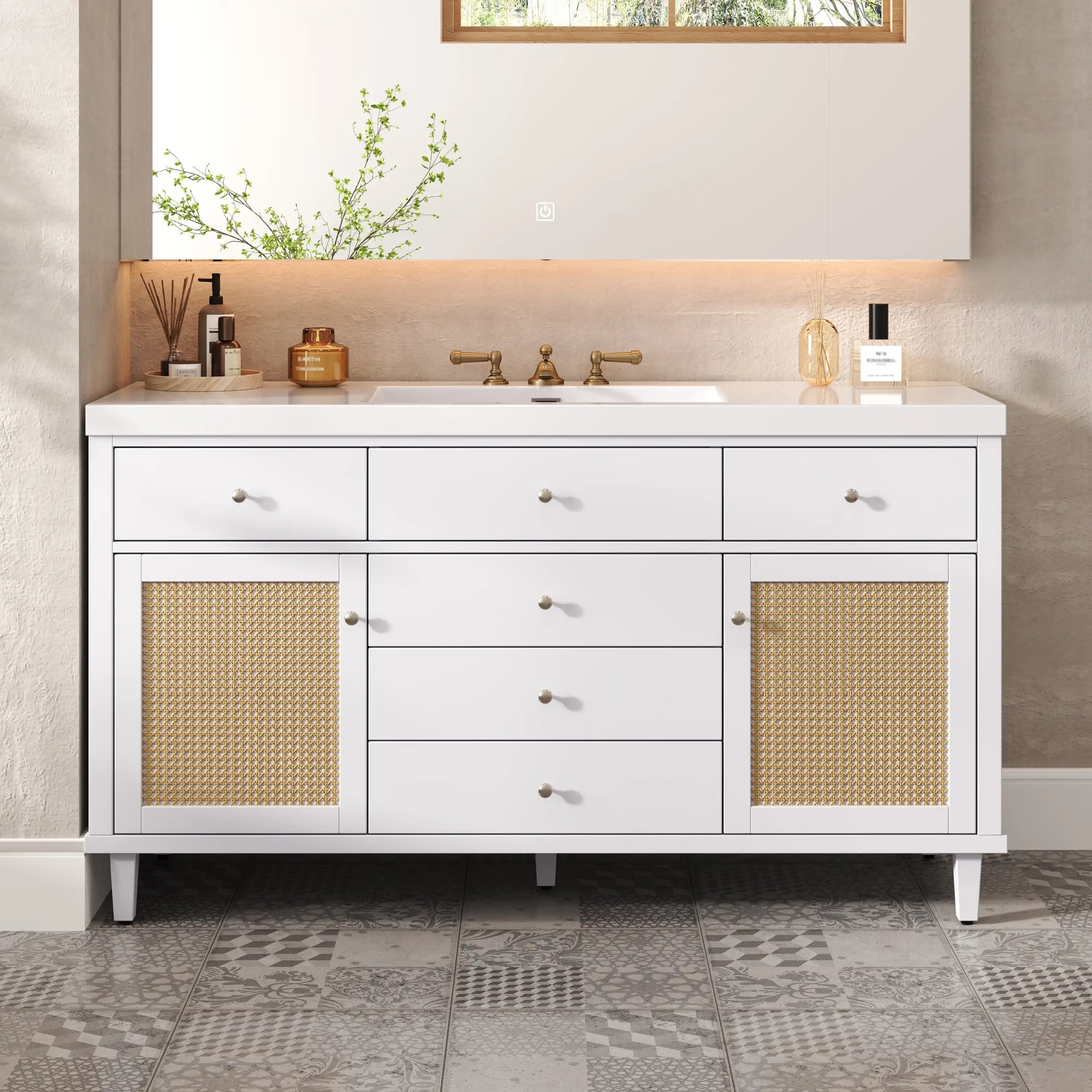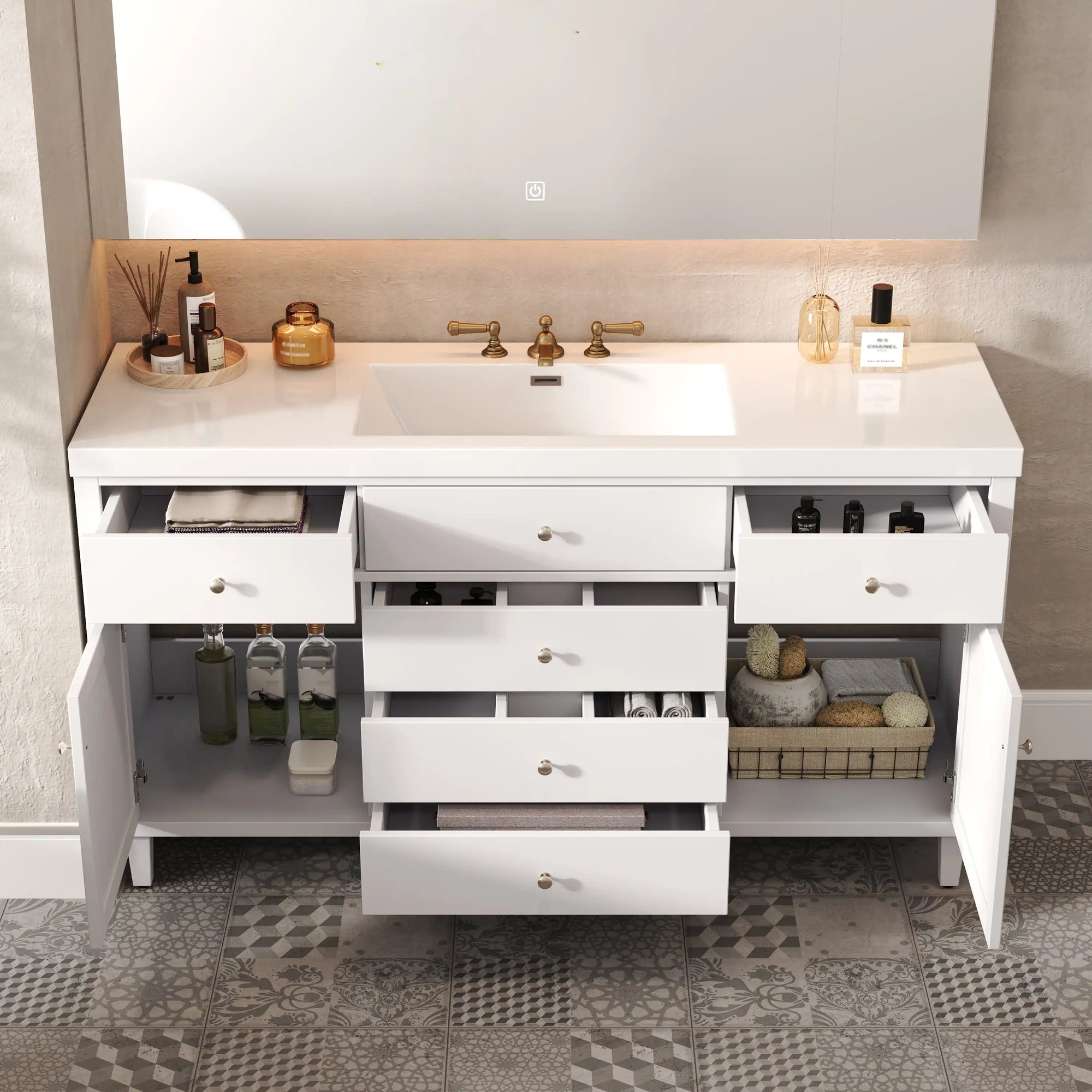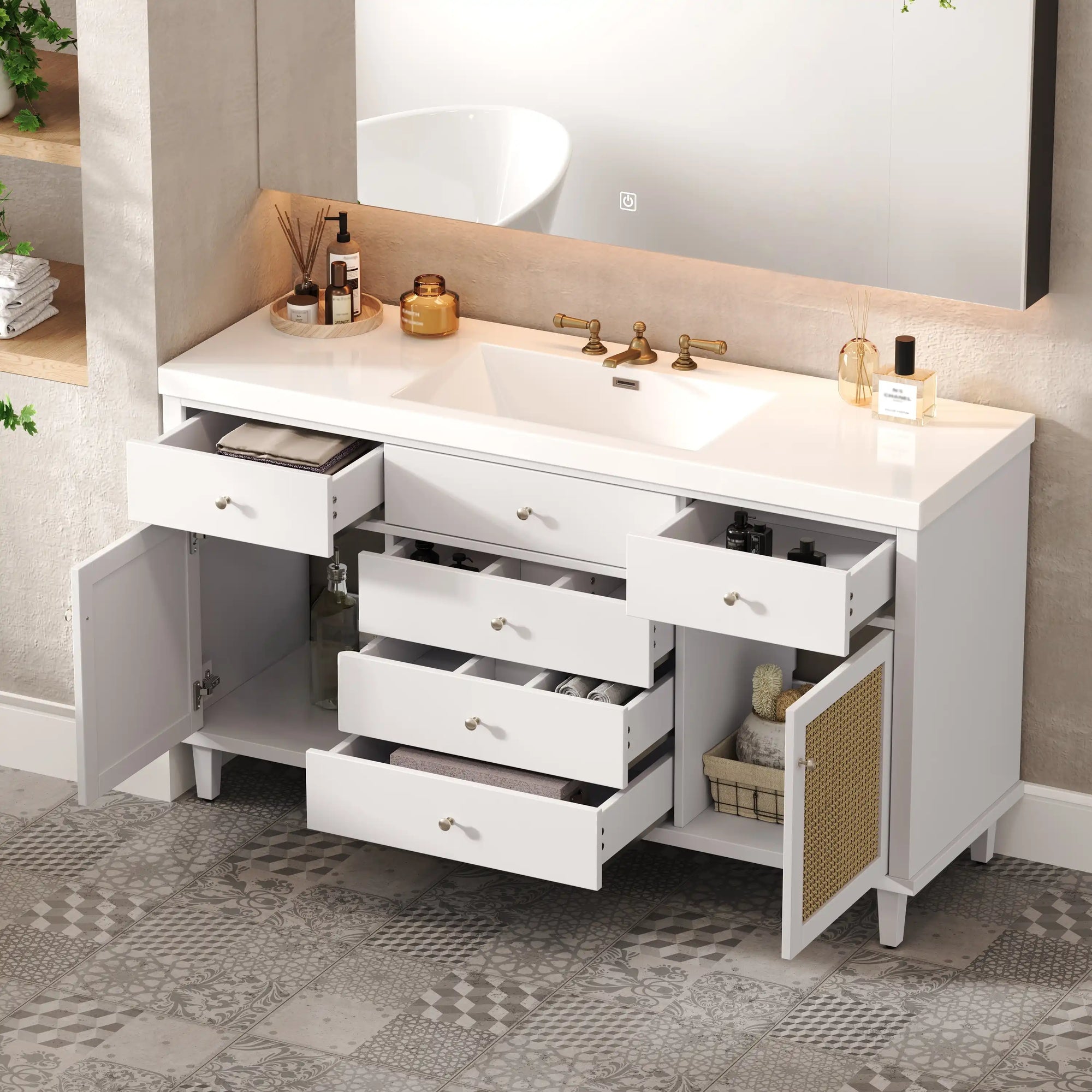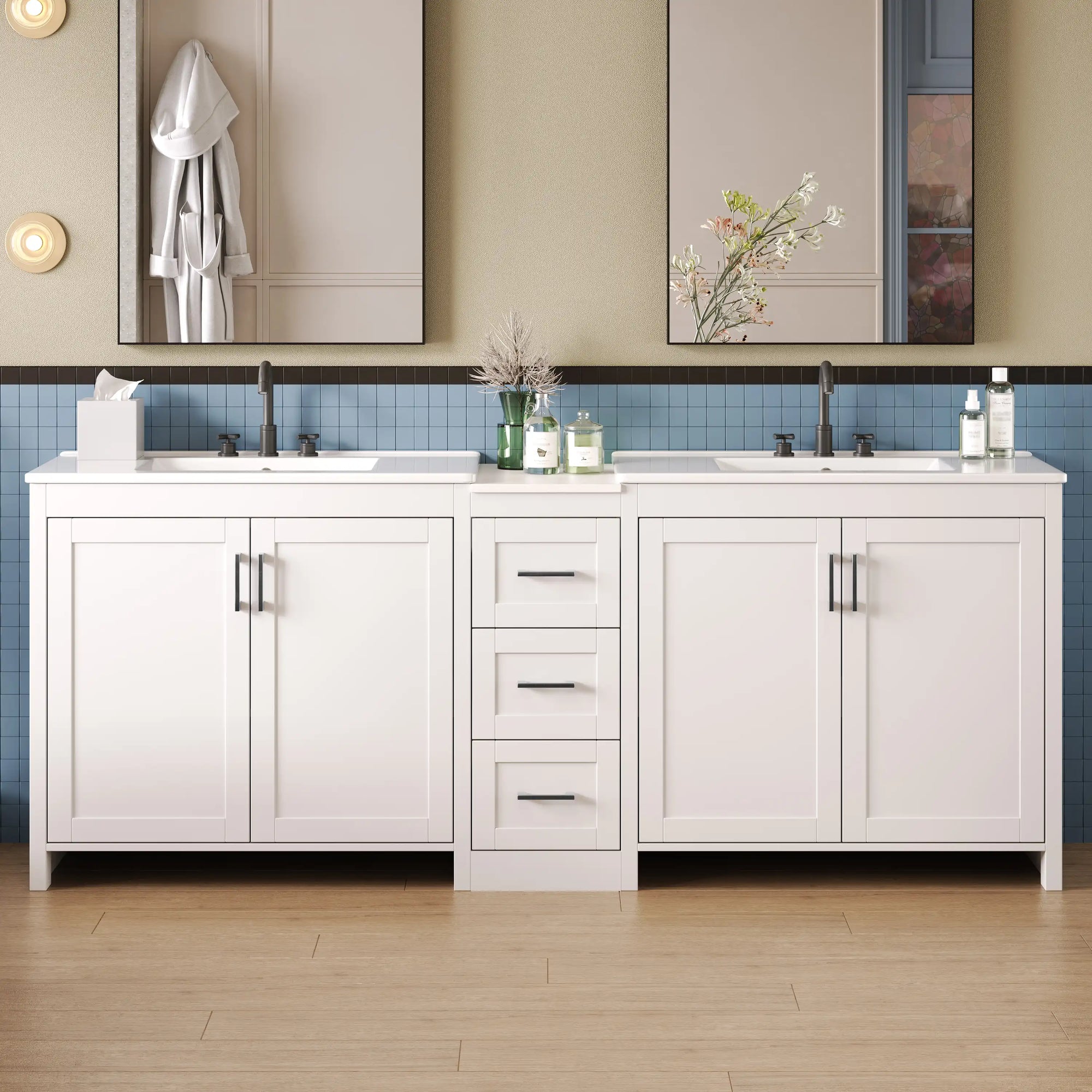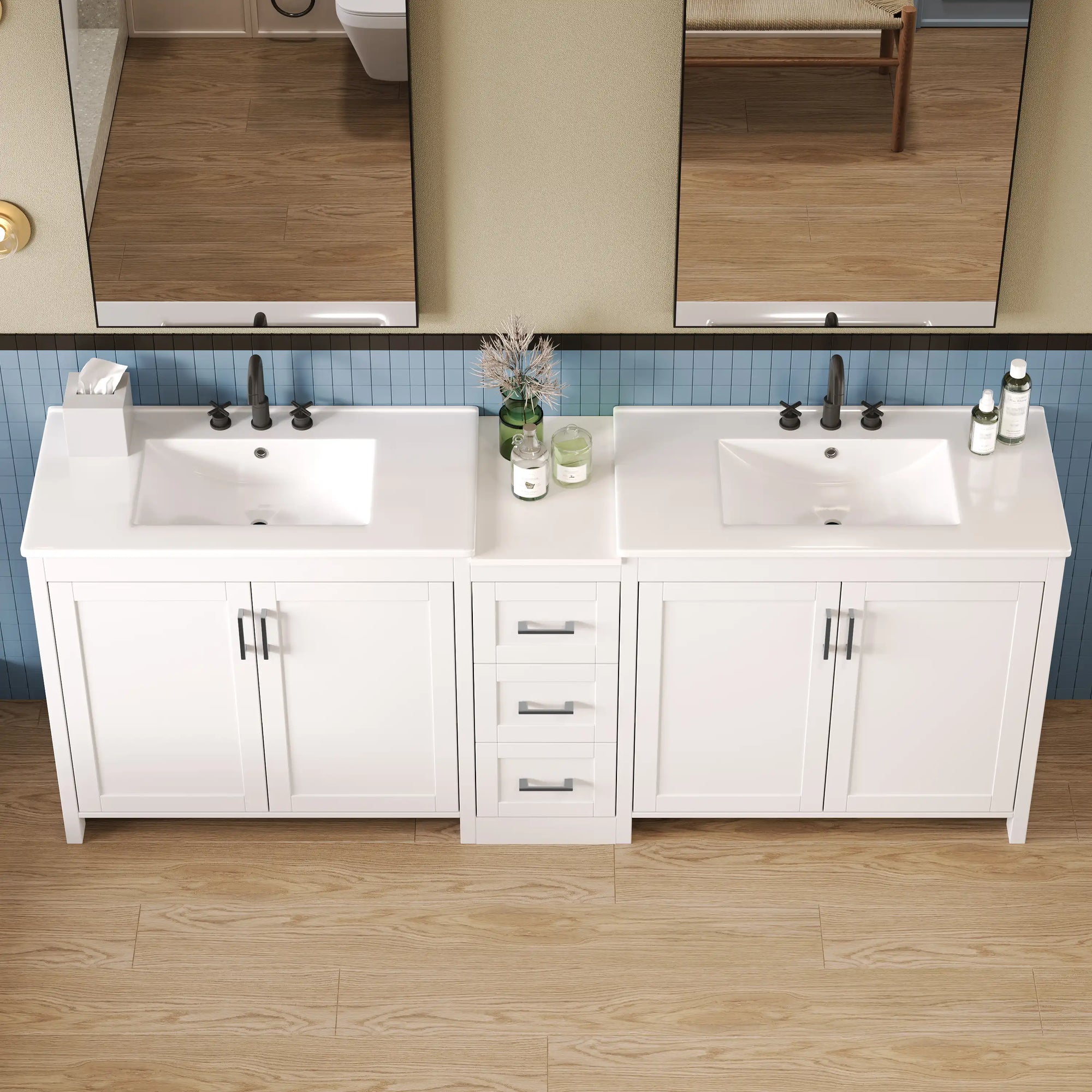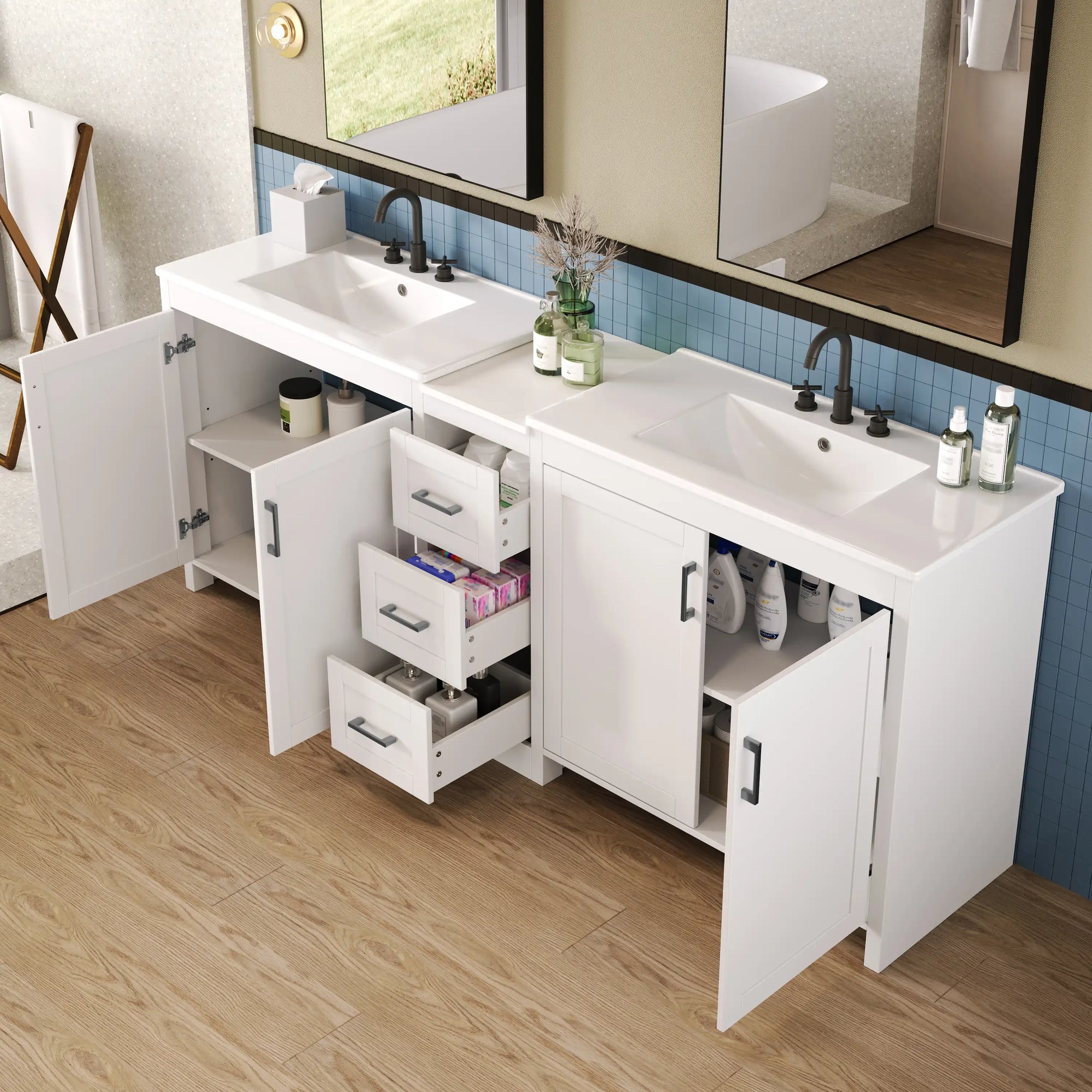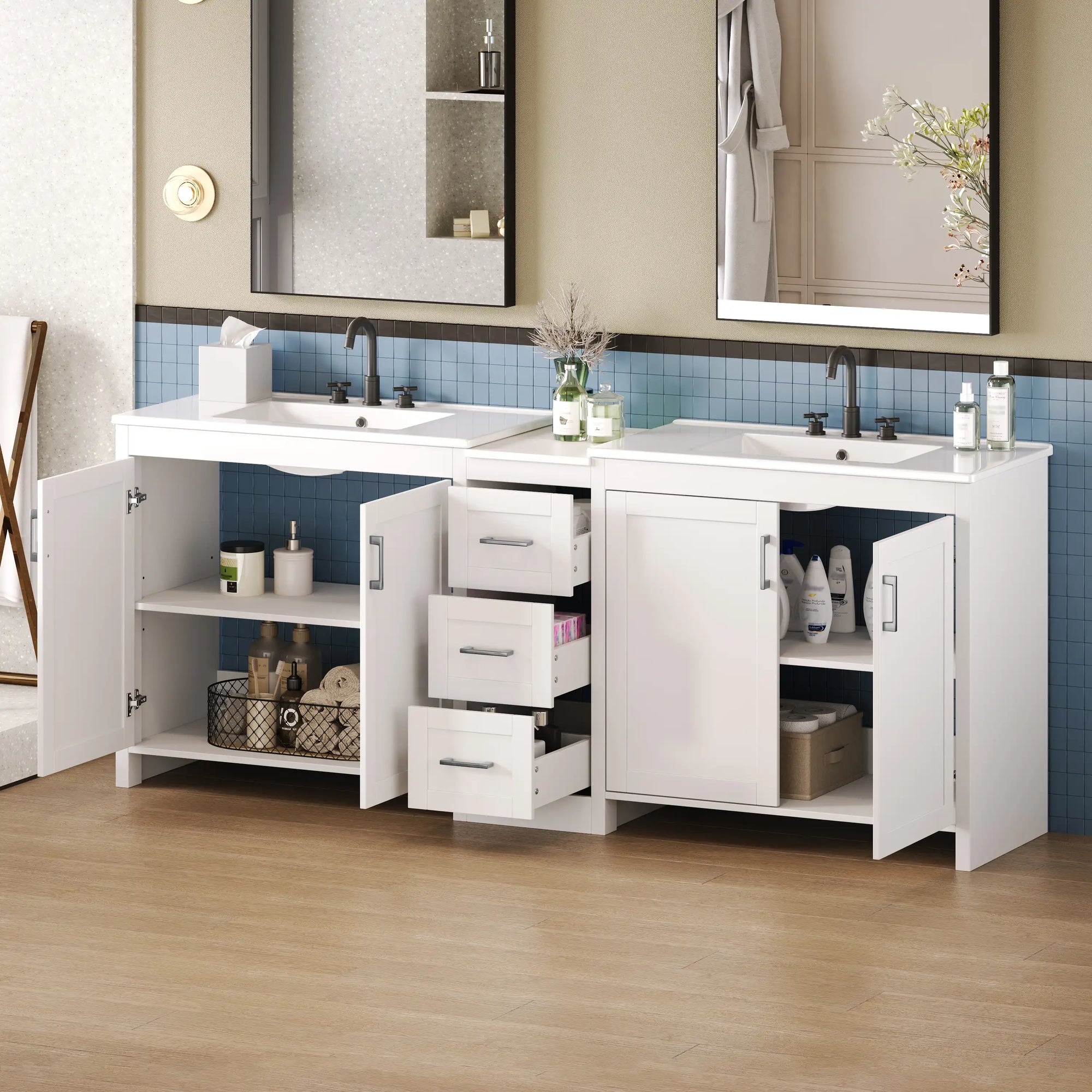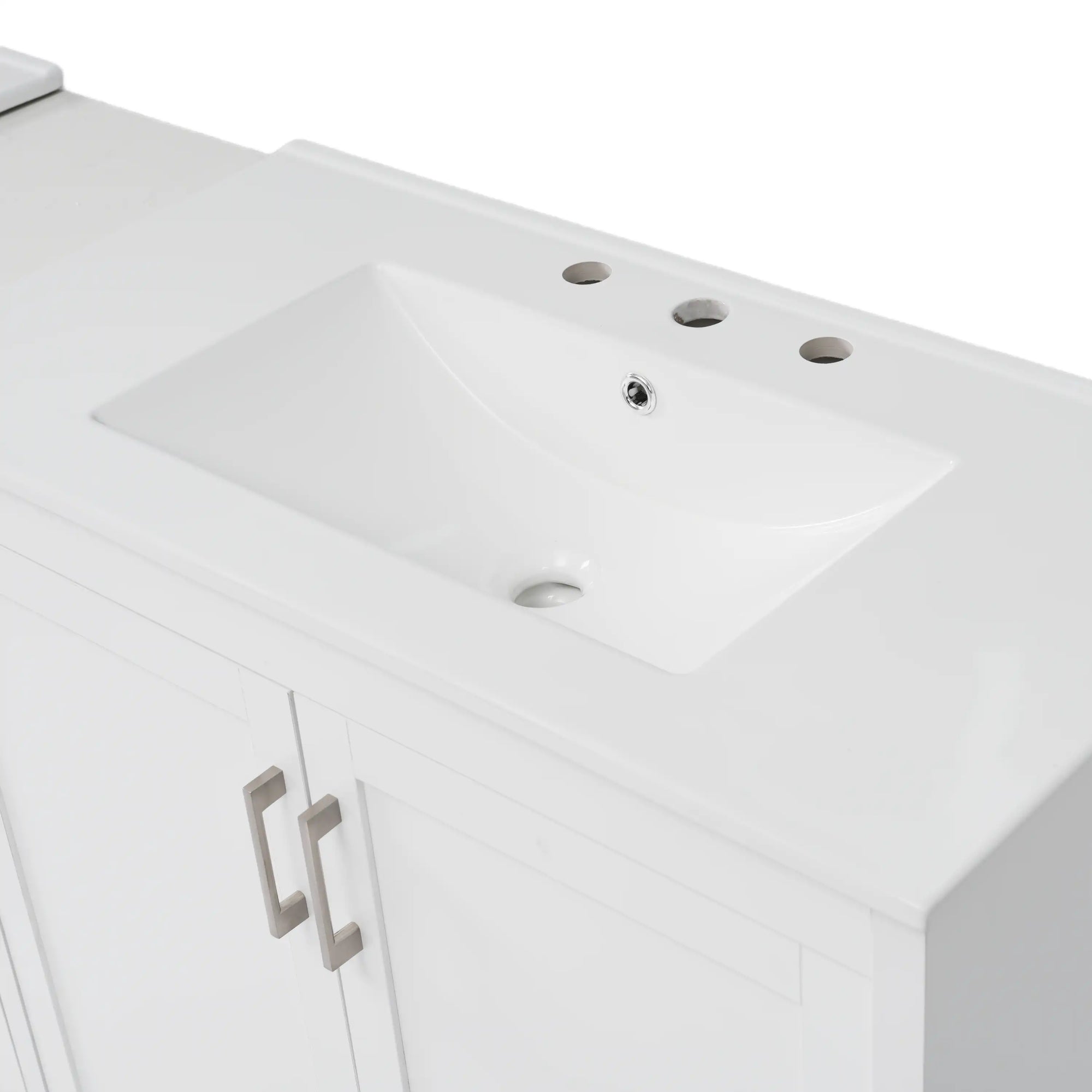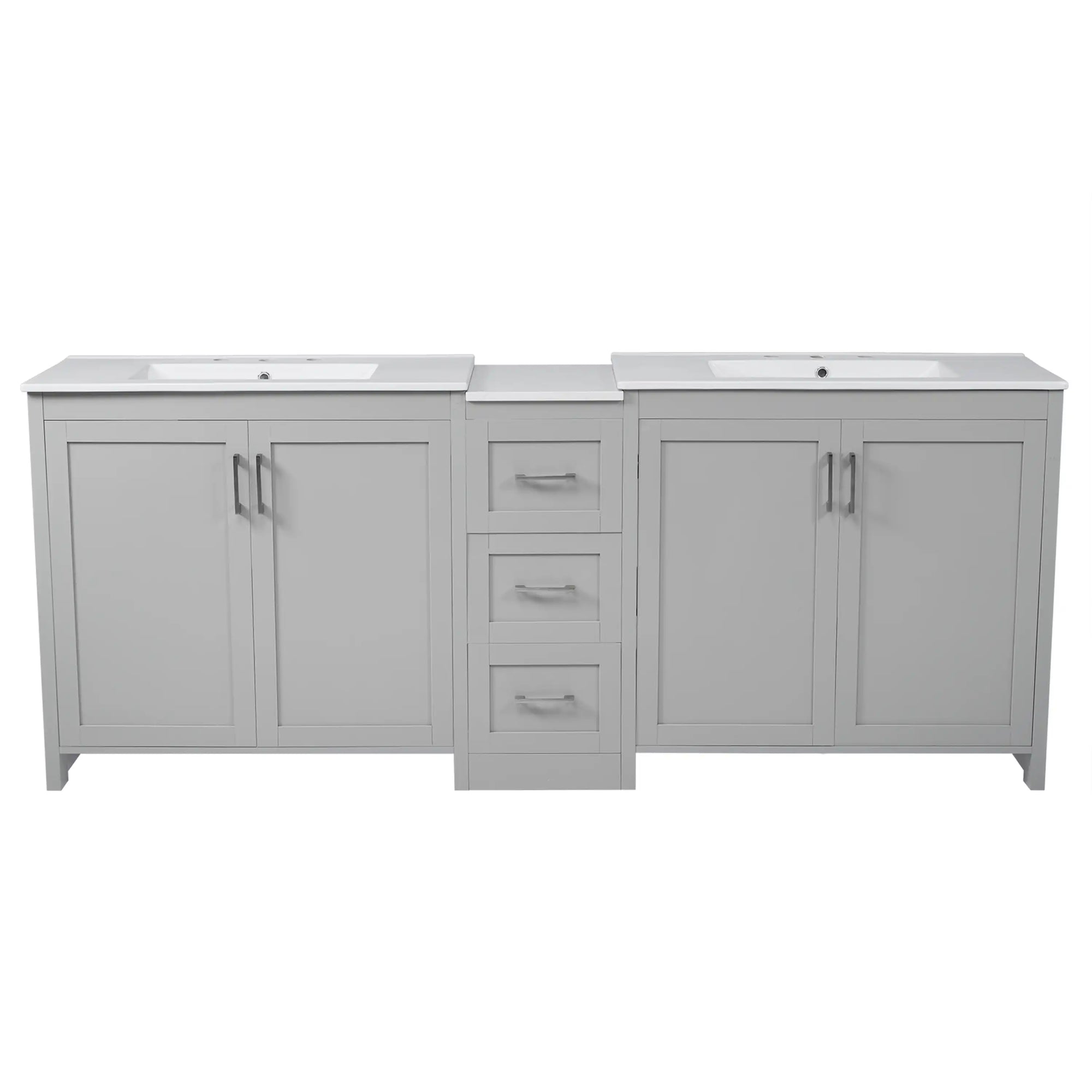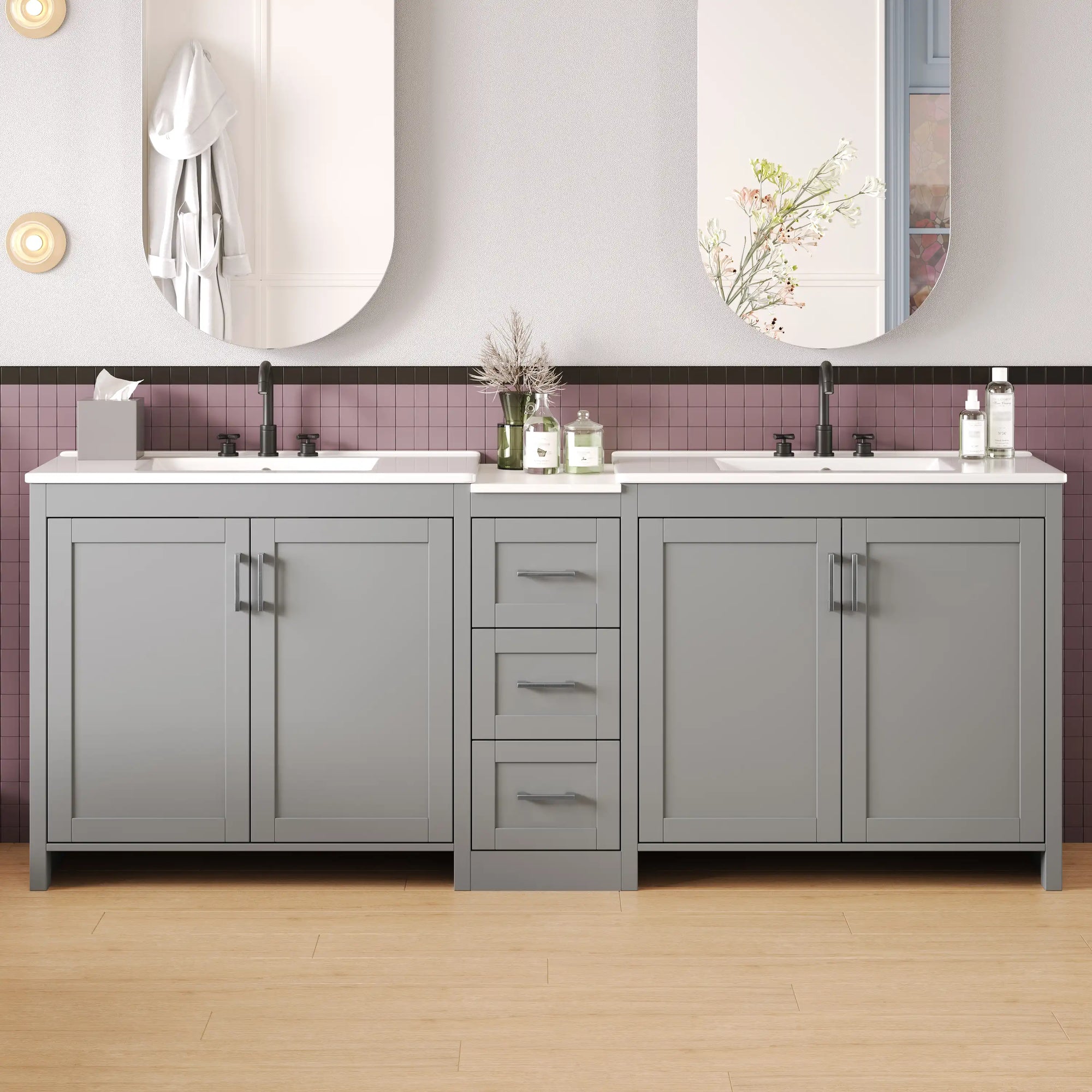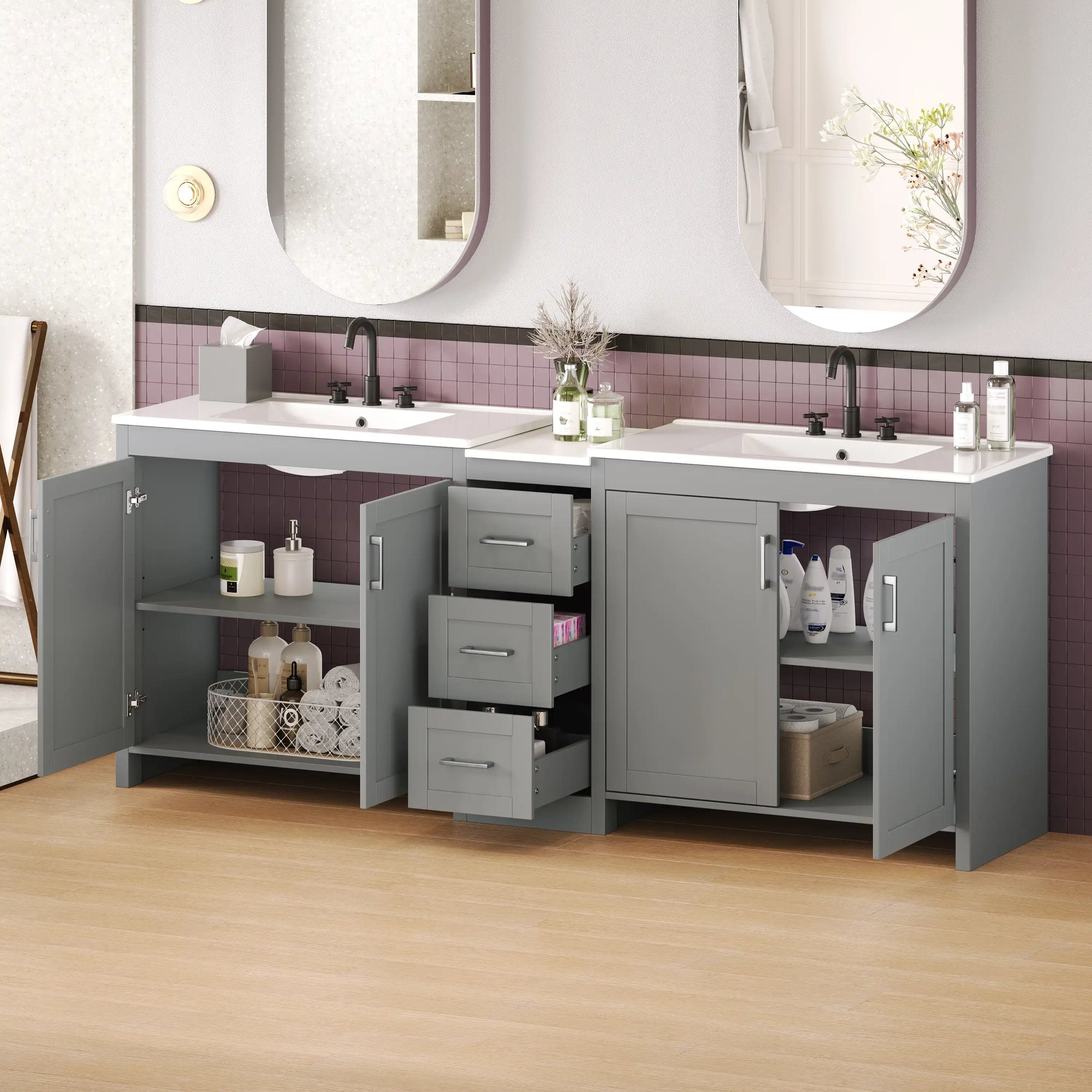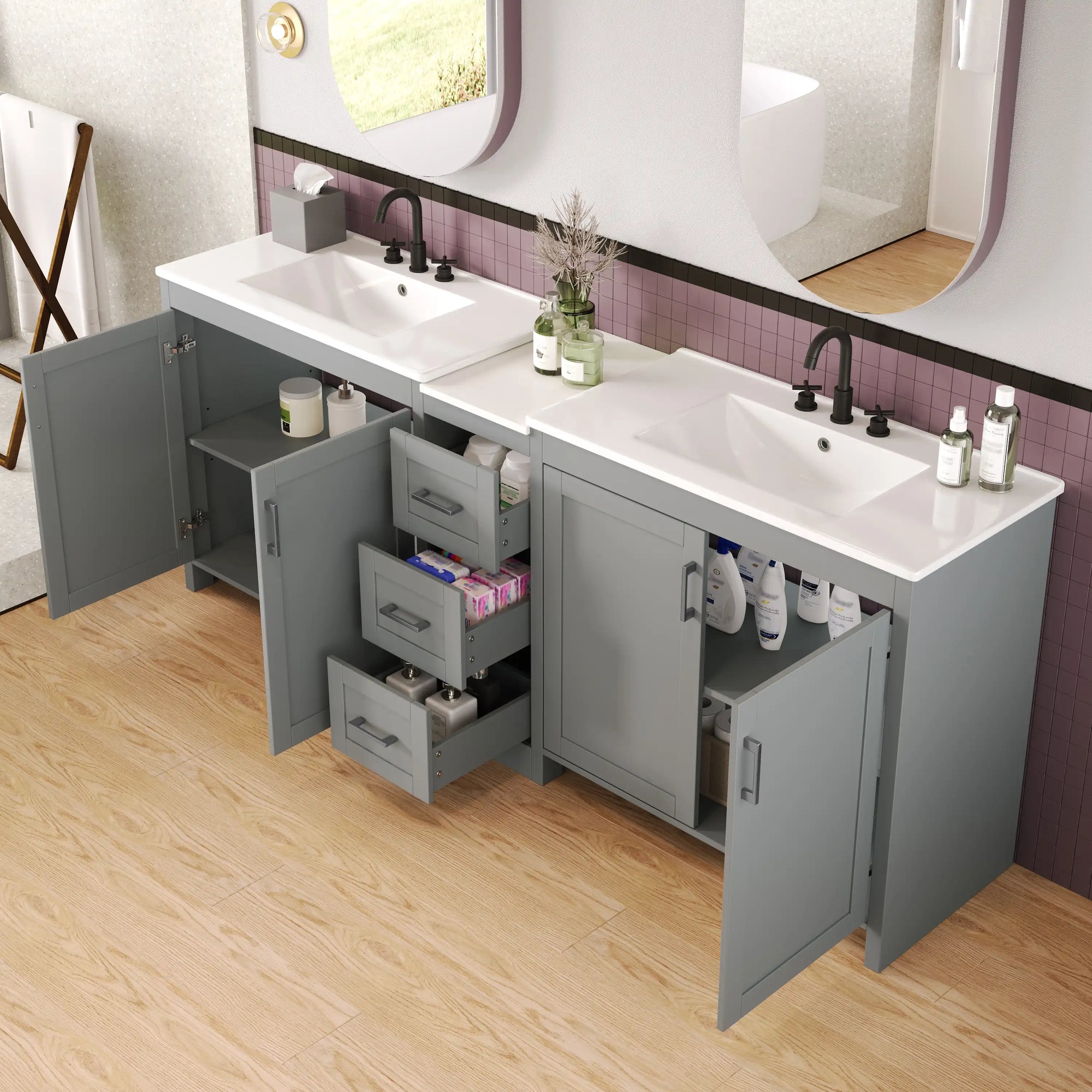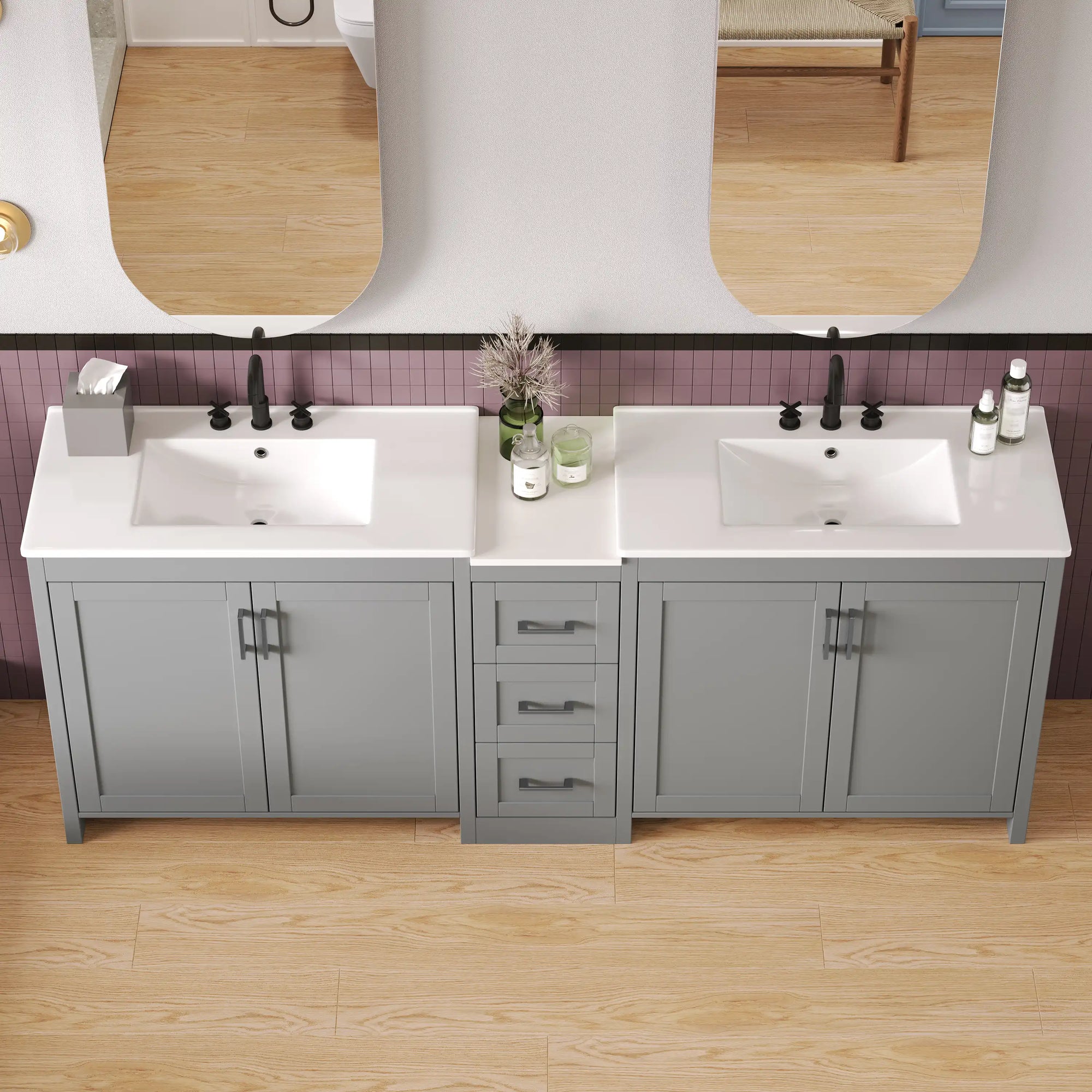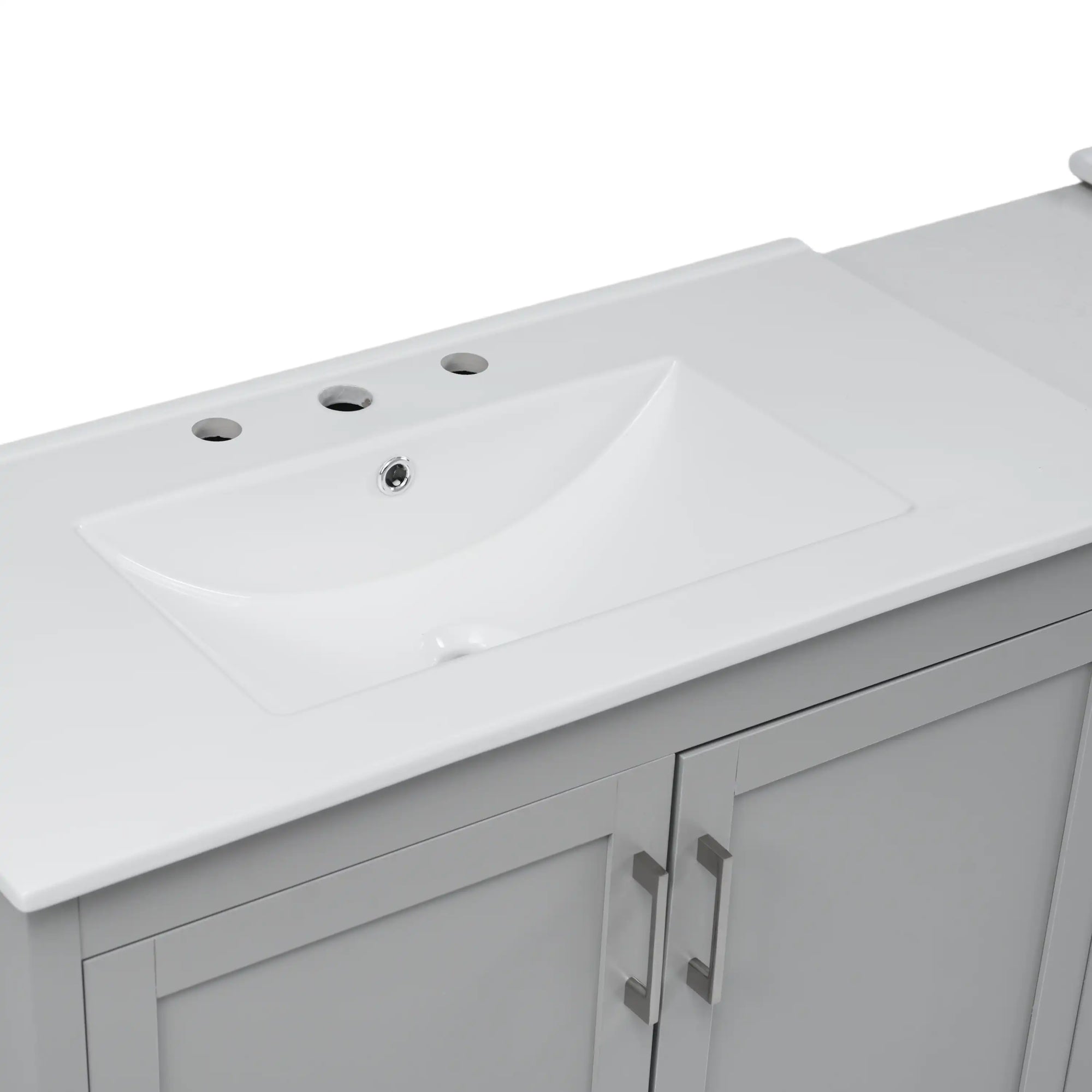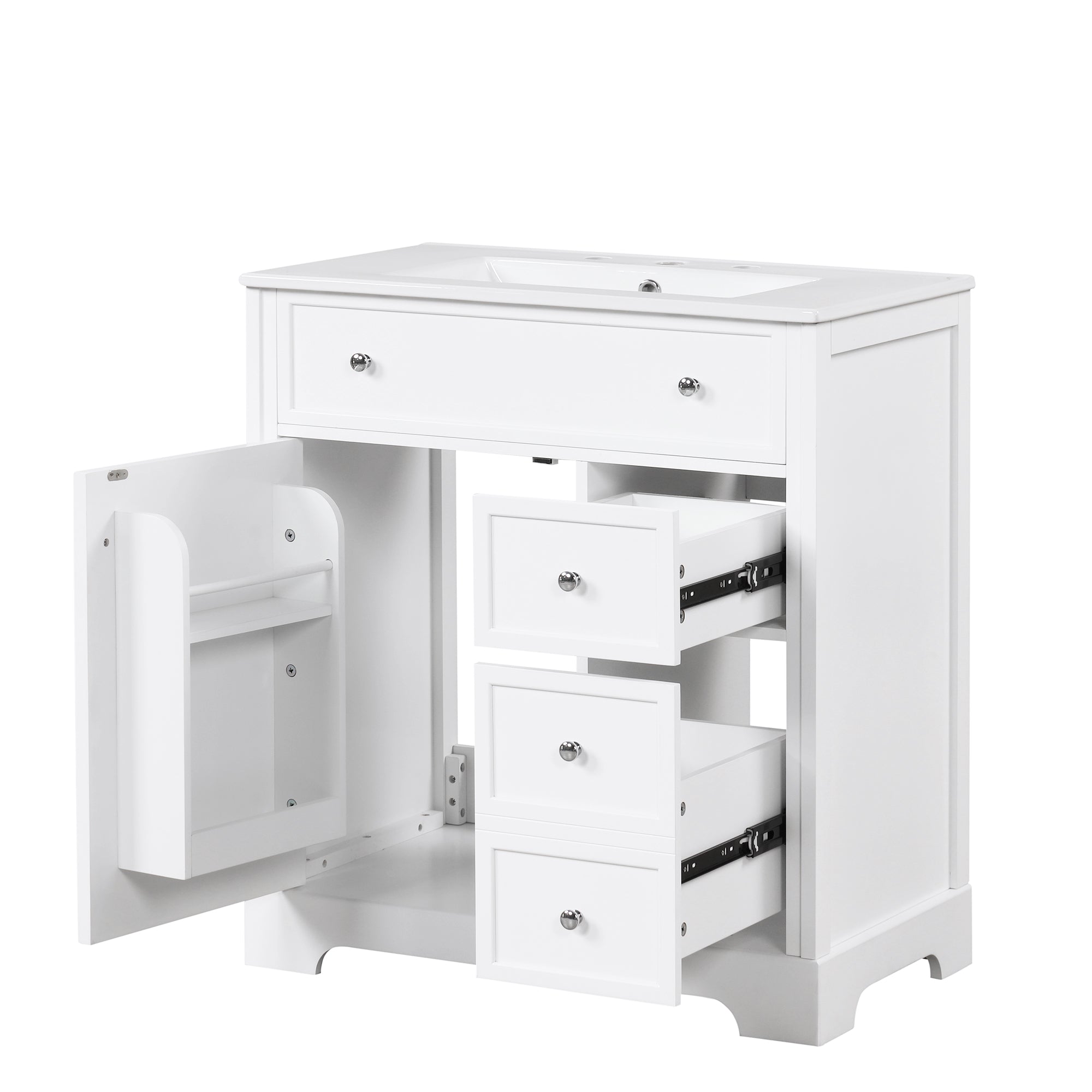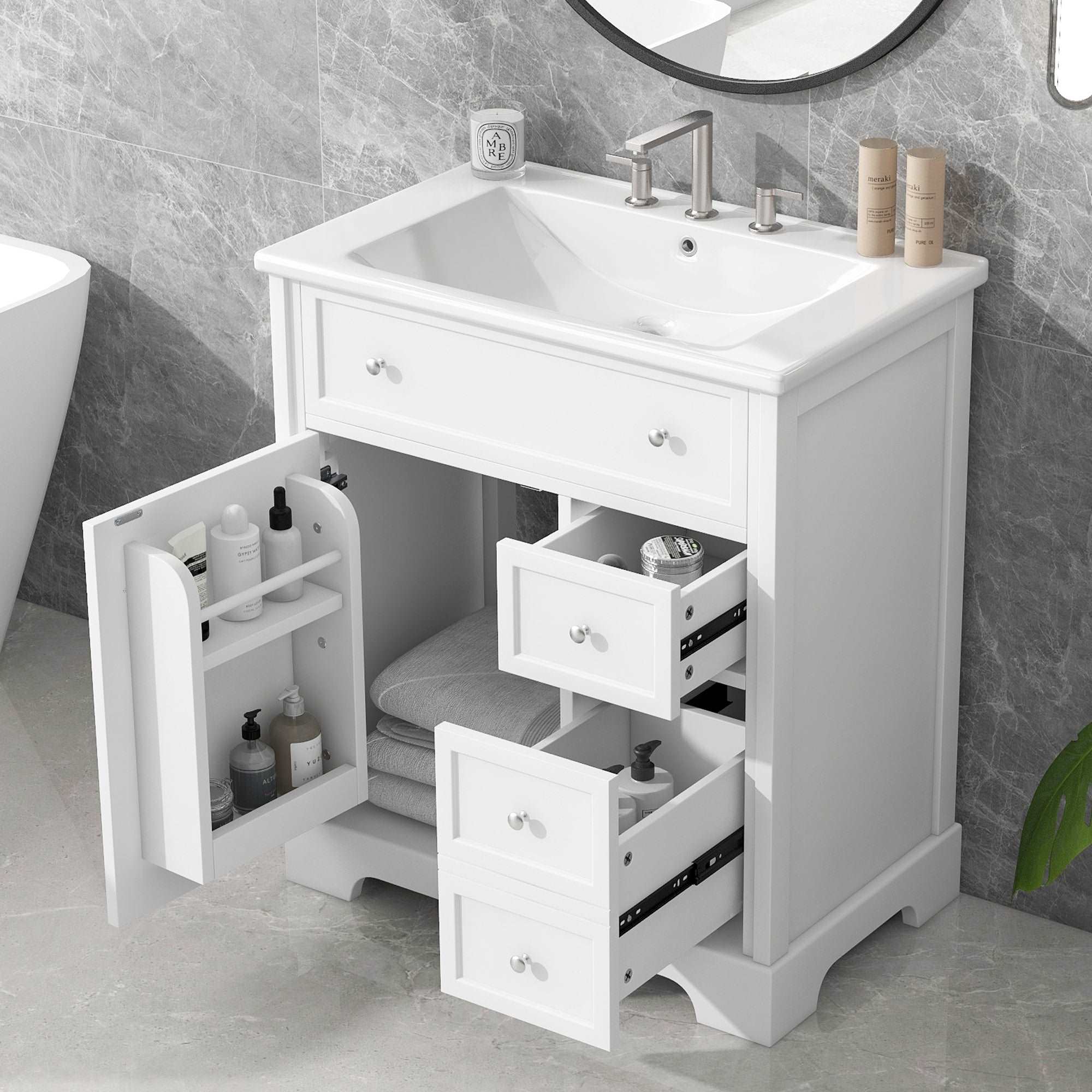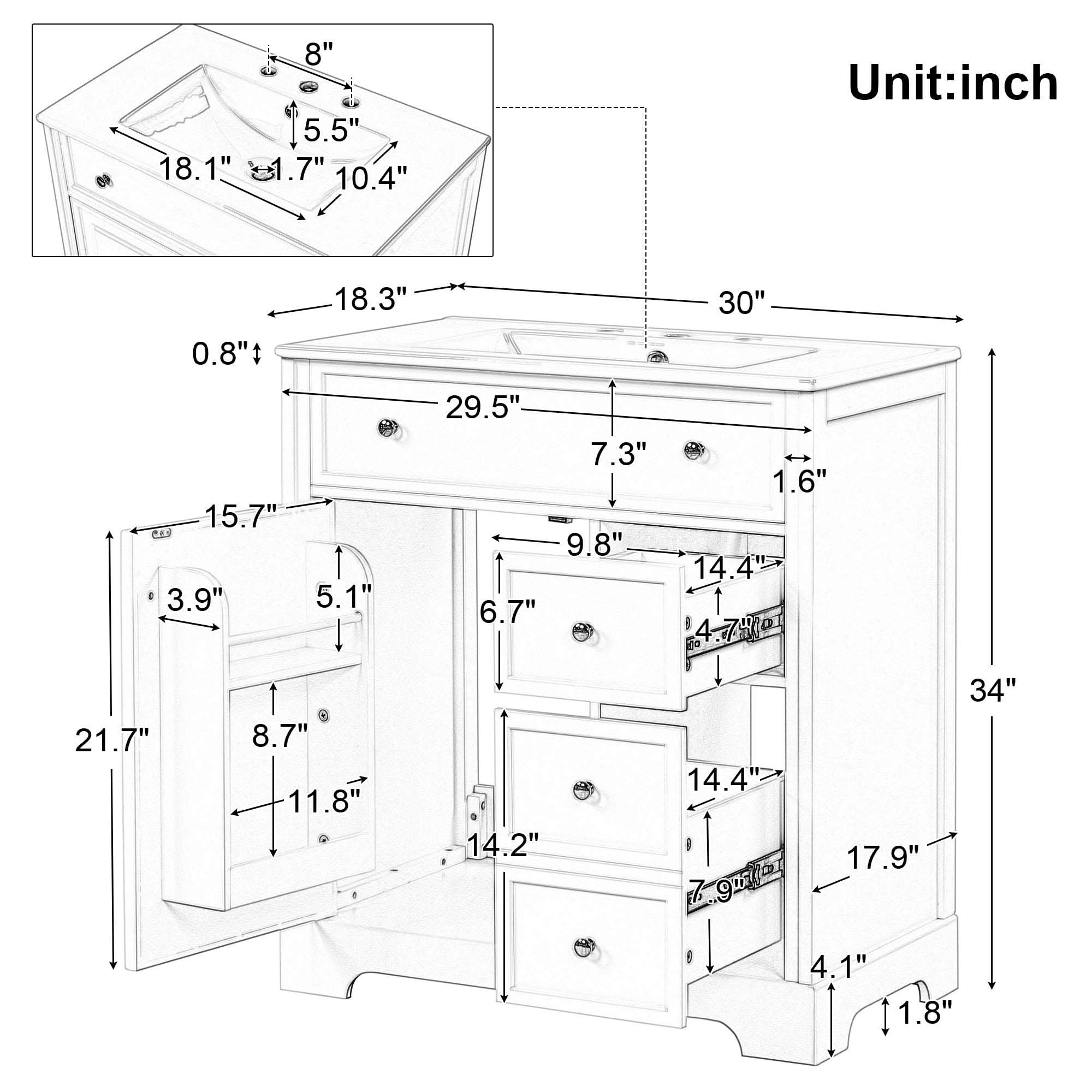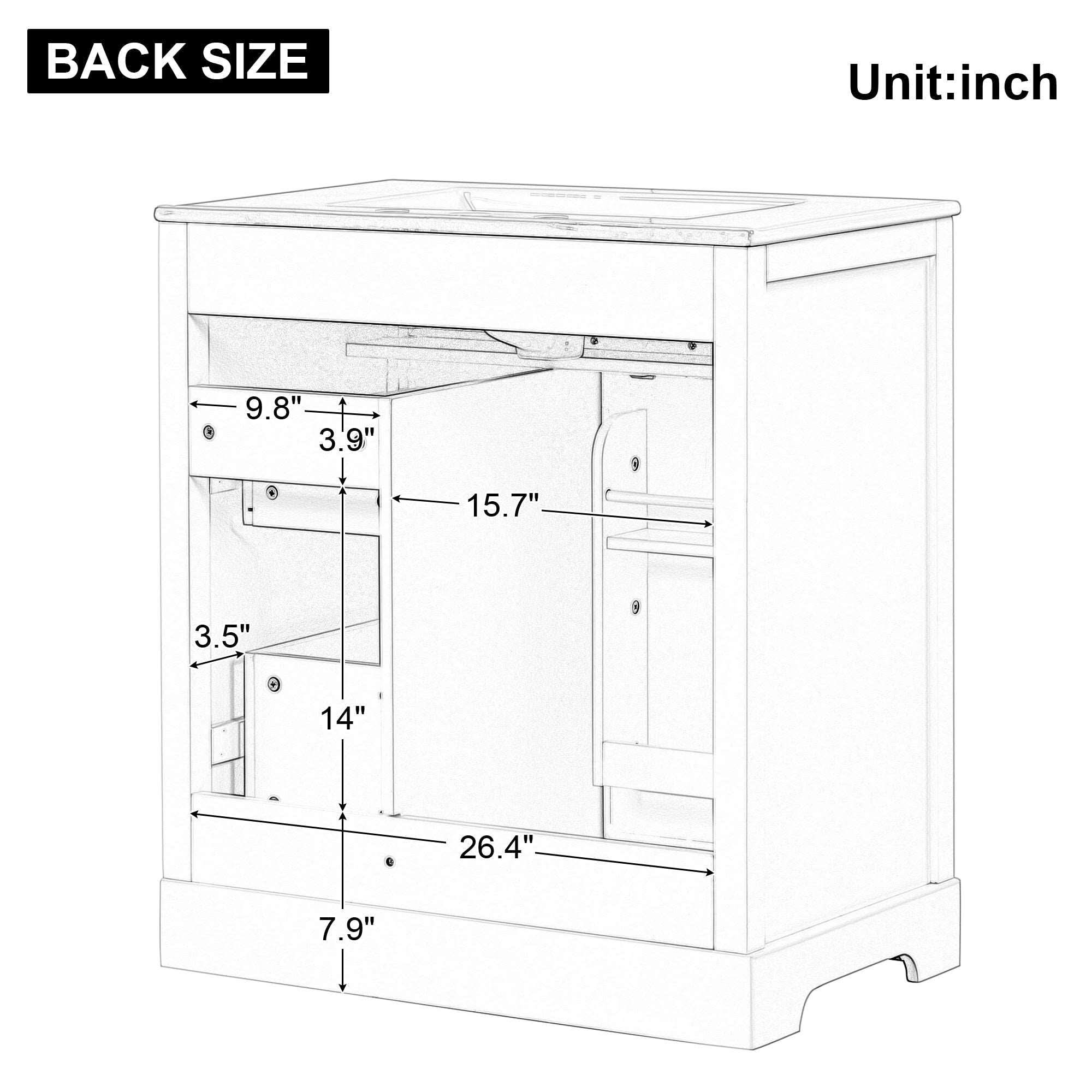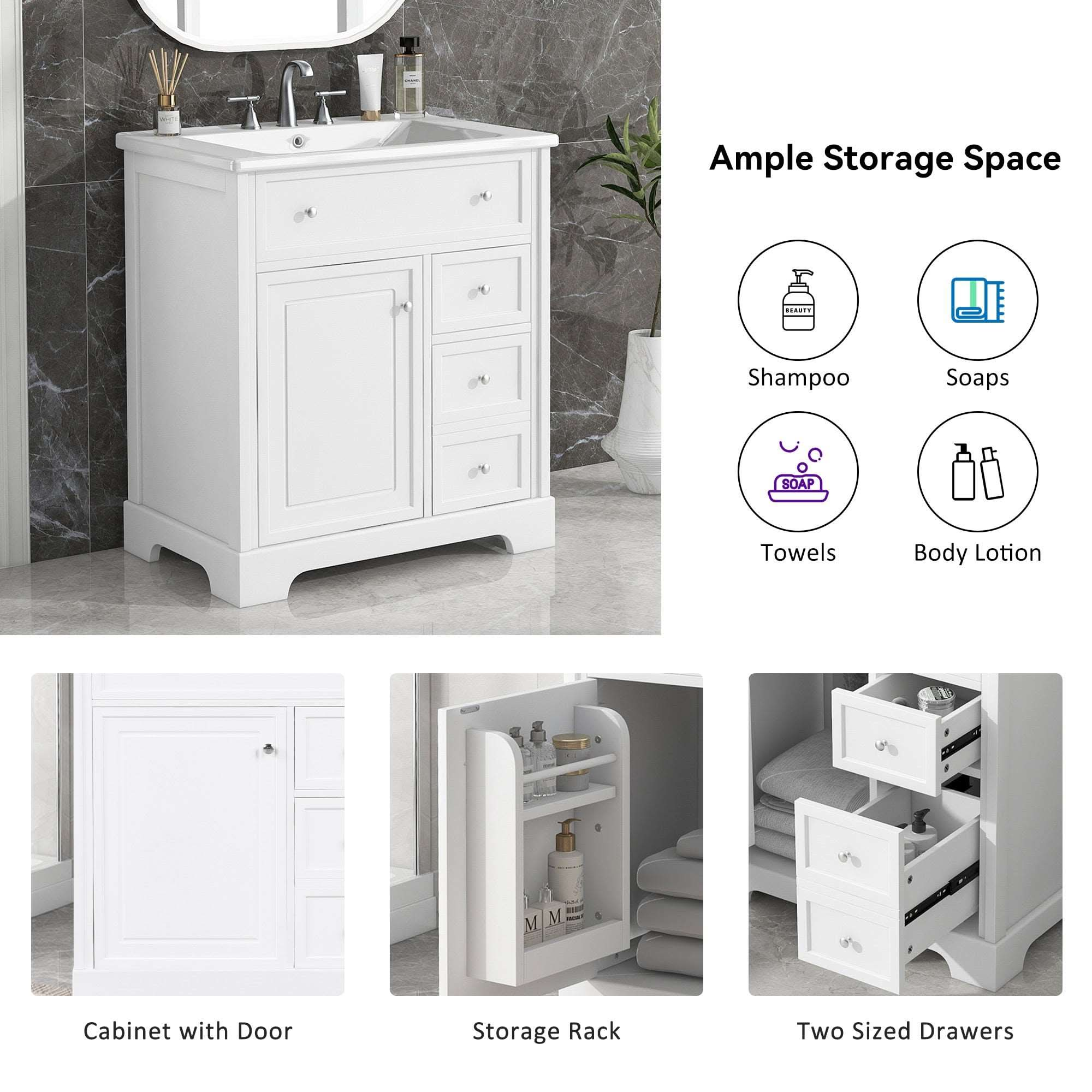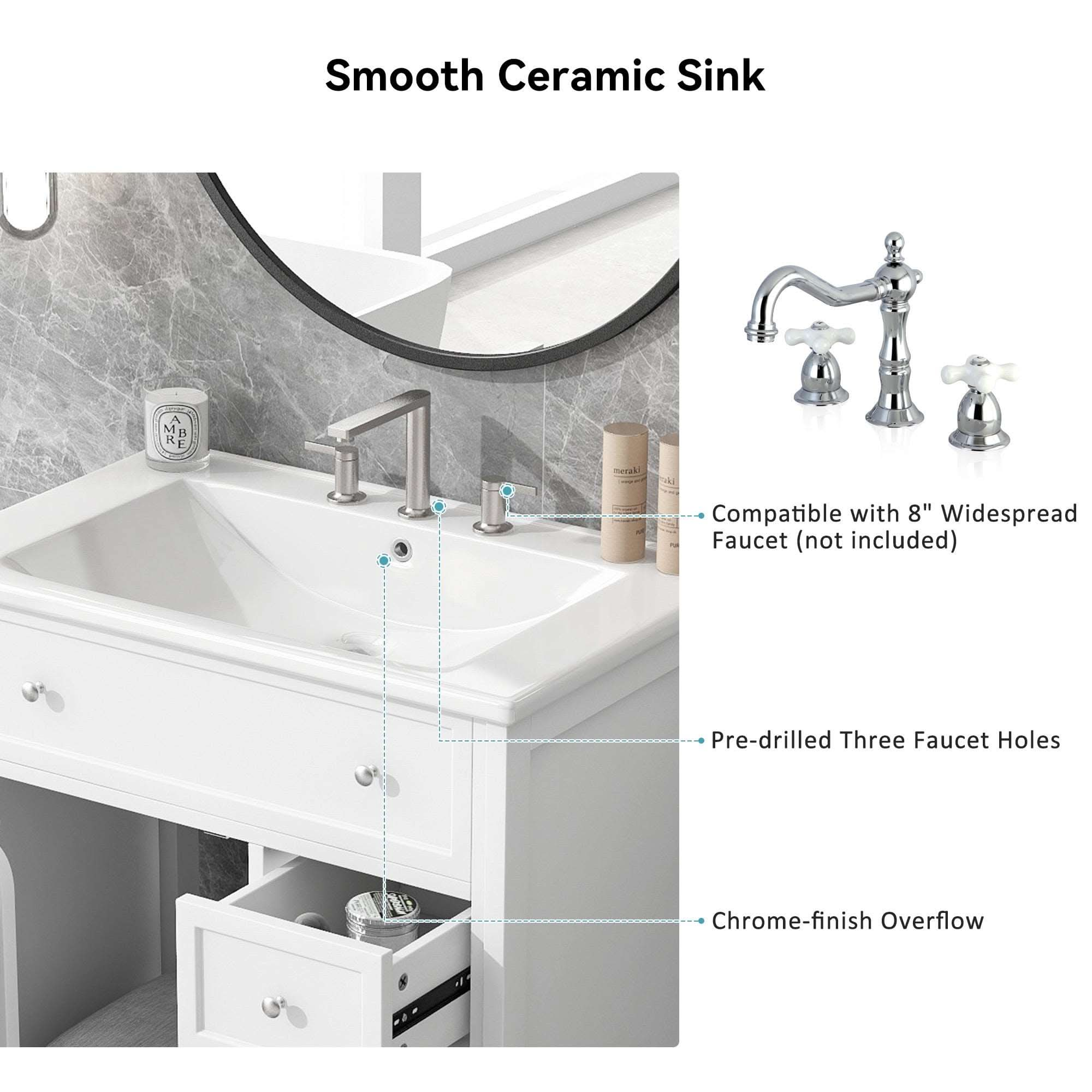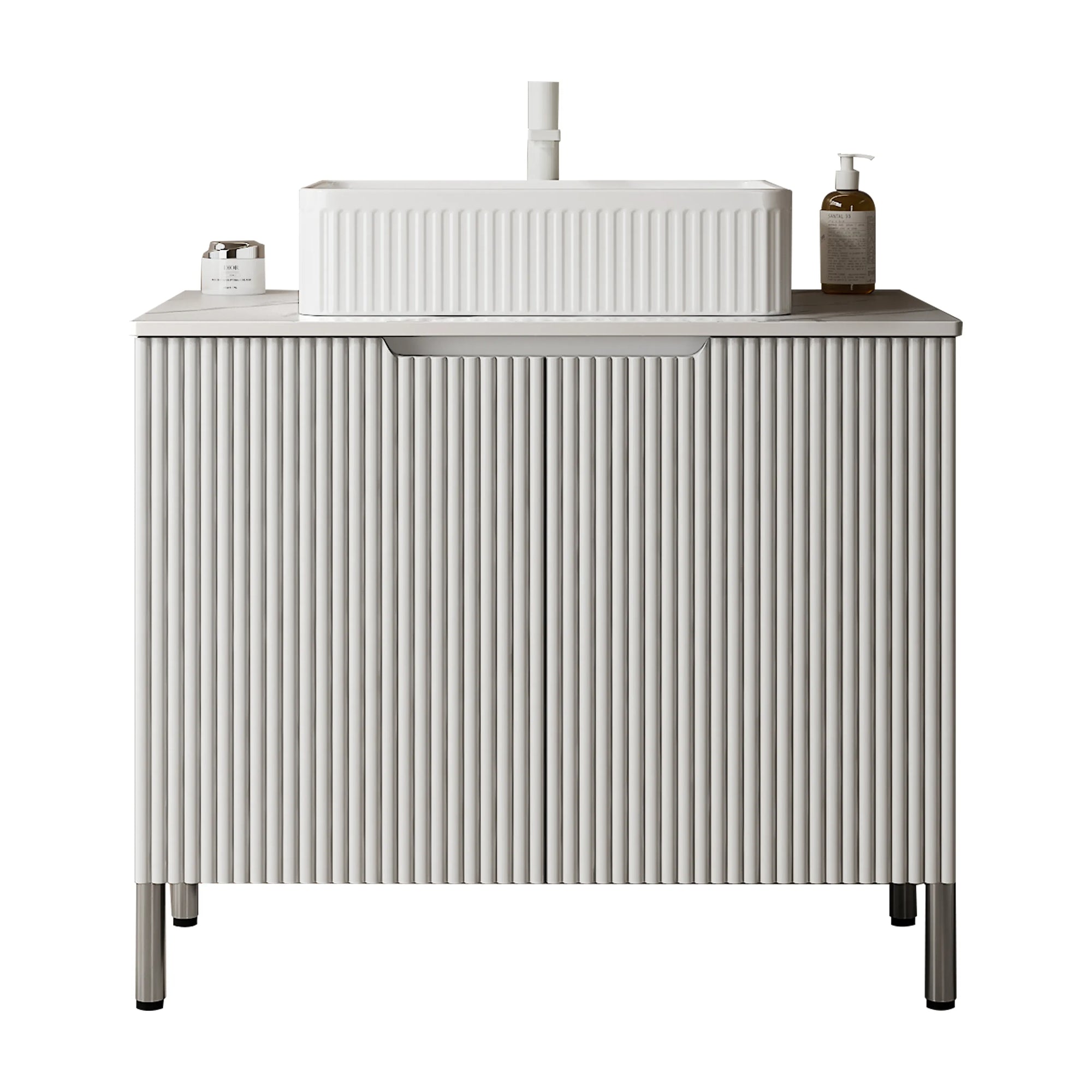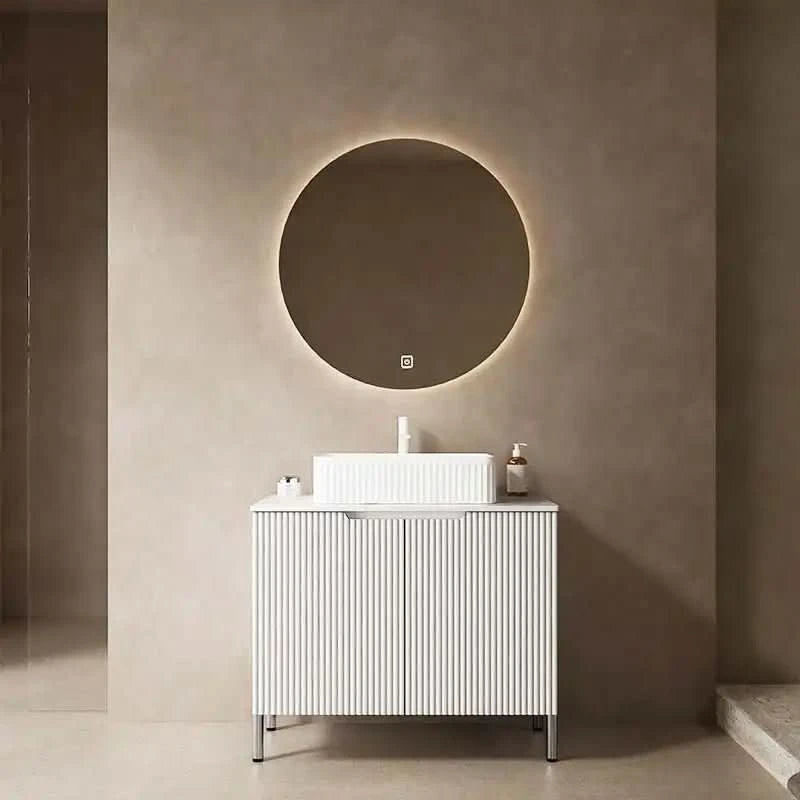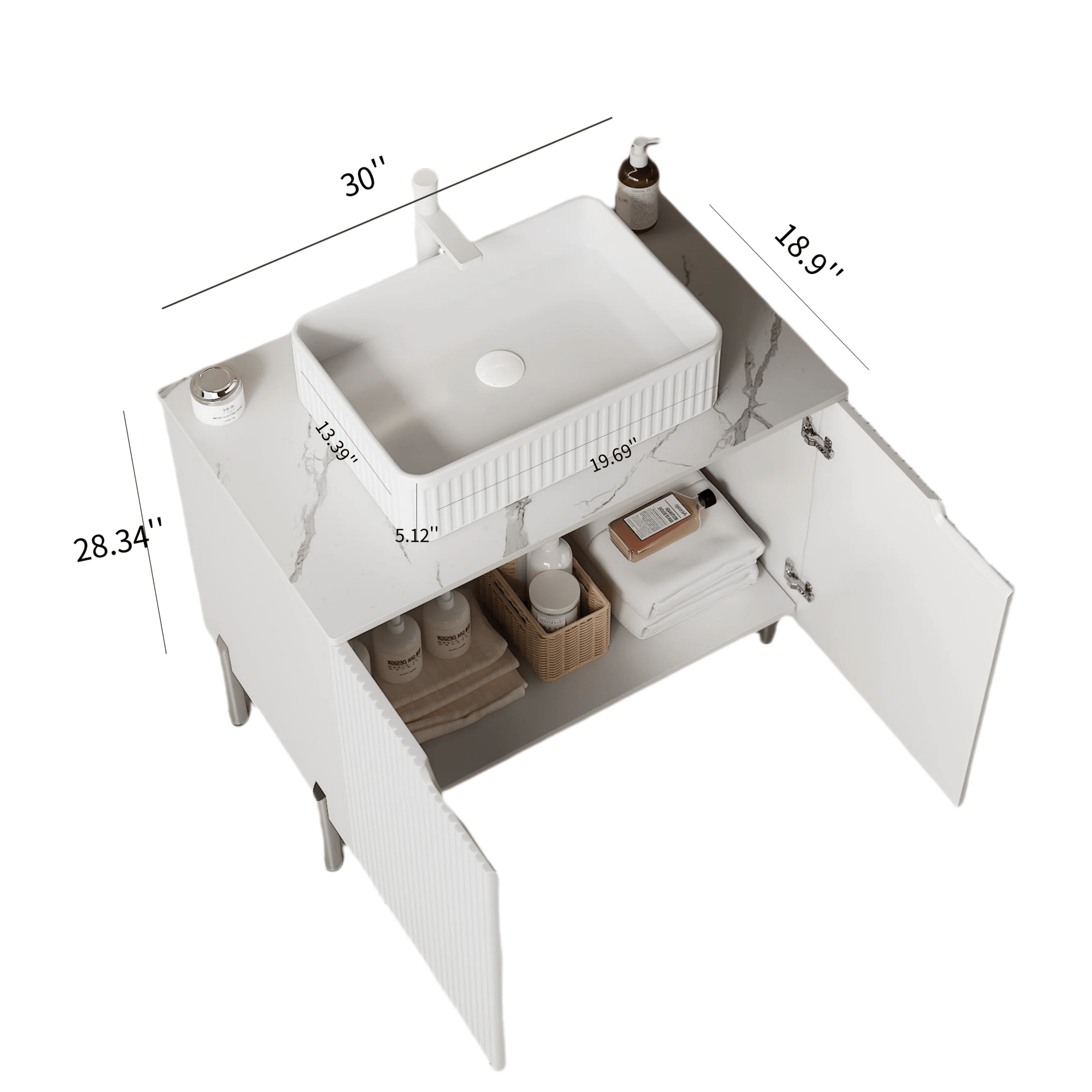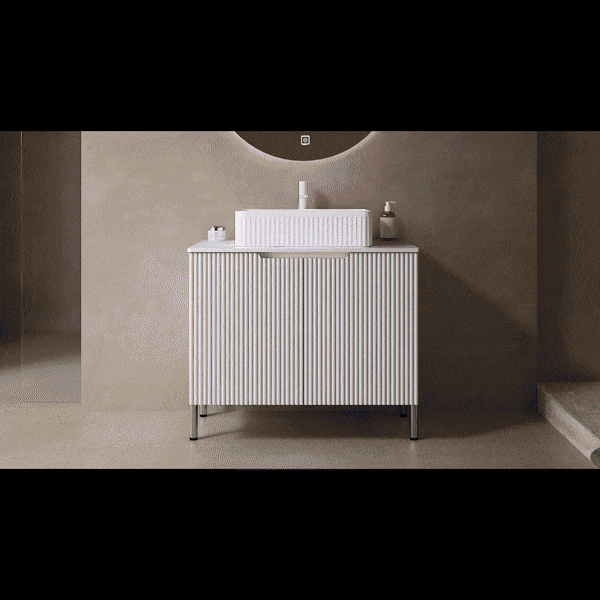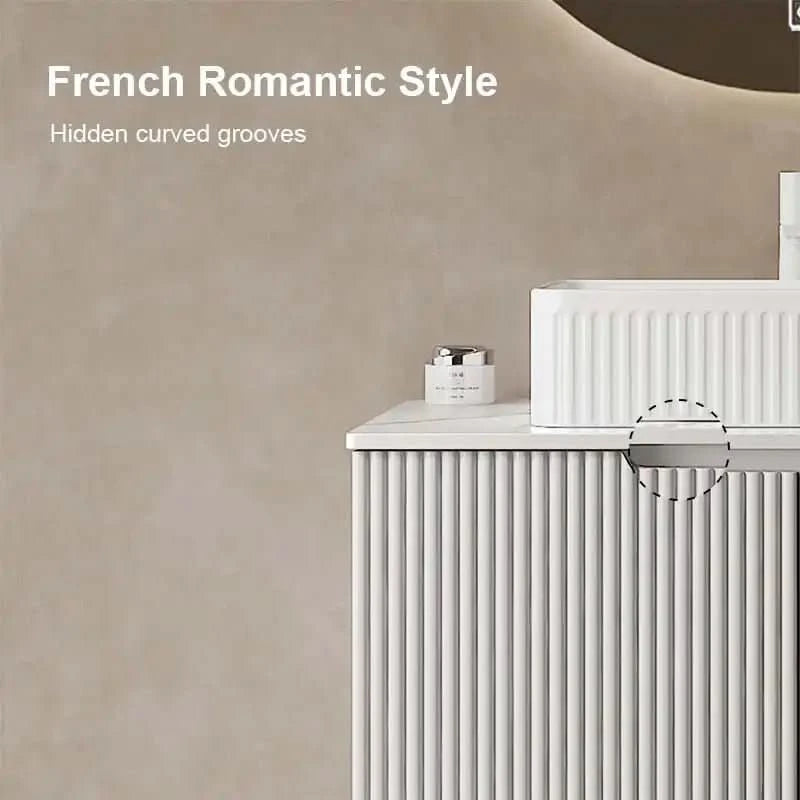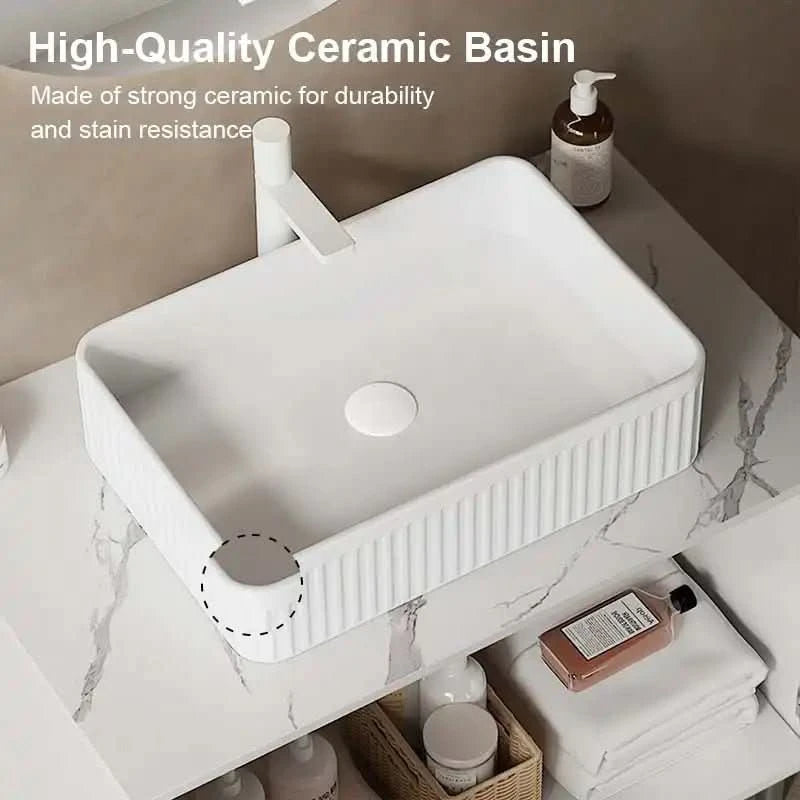Table of Contents
- What Is a Vessel Sink?
- A Brief History & Design Trend of Vessel Sinks
- Types, Materials & Finishes
- Pros & Cons of Vessel Sinks
- Vessel Sink Maintenance & Troubleshooting
- Vessel Sink vs Other Sink Types
- Cost & Budgeting for a Vessel Sink in 2025
- Ace Decor's Integrated Vessel Sink Vanity Solutions
- FAQs About Vessel Sinks
- Conclusion – Is a Vessel Sink Right for You?
- Related Articles
Bathroom design in 2025 is all about making a statement, and few fixtures achieve that as effortlessly as a vessel sink. Sleek, elevated, and available in a wide range of styles, these basins have become the centerpiece of many modern and transitional bathrooms. If you've ever wondered, "What is a vessel sink?”, the answer is more than just a definition — it's an entire design philosophy. A vessel sink, sometimes called a vessel bathroom sink or countertop basin, transforms a purely functional fixture into a focal point, allowing you to infuse personality into your bathroom.
This guide takes you through everything you need to know: from what a vessel sink actually is, to the latest design trends, practical pros and cons, maintenance solutions from real homeowners, and how Ace Decor's integrated vanity solutions can make vessel sinks even more enjoyable to own.
What Is a Vessel Sink?
A vessel sink is a type of basin that sits entirely or partially on top of a bathroom countertop, rather than being recessed or installed underneath it. This design creates an instant visual lift, drawing the eye upward and adding an element of luxury to the space. While often called "bowl sinks,” vessel sinks can be found in a range of shapes — round, rectangular, square, or even asymmetrical sculptural forms. They can be crafted from glass, ceramic, stone, concrete, metal, or wood, with each material adding its own personality and texture to the bathroom.
Unlike undermount sinks, which blend discreetly into the counter, a vessel sink is meant to stand out. It becomes a design feature in its own right, much like a piece of functional art. This visibility allows for bolder colors, striking patterns, or organic textures that wouldn't be as noticeable with a traditional sink style.
On the U.S. West Coast, where homes often embrace light-filled, airy interiors, vessel sinks are especially popular in master bathrooms, guest baths, and even high-end powder rooms. Homeowners in California coastal towns, for example, might opt for a white ceramic or matte stone basin paired with light oak cabinetry for a relaxed, beach-inspired feel. In the Pacific Northwest, natural stone vessel sinks in earthy grays or greens pair beautifully with rich wood tones and the surrounding forest aesthetic. And in desert modern homes of Arizona or Nevada, a copper or concrete vessel sink can complement the warm tones and contemporary architecture common to the region.
While the look is versatile, a vessel sink also brings functional considerations: faucet placement, splash control, cleaning methods, and counter height adjustments are all important factors to ensure the design works in daily life.

A Brief History & Design Trend of Vessel Sinks
The vessel sink is not a modern invention — its roots trace back centuries to when washing was done in a portable bowl placed on a stand or table. Before indoor plumbing became standard, ceramic and porcelain washbasins were common in European bedrooms, often paired with a matching pitcher. The vessel sink we know today is a refined, plumbed-in evolution of those early designs.
In the last two decades, vessel sinks surged in popularity, especially during the early 2000s when spa-inspired bathrooms became a major design trend. Designers embraced them for their ability to add height, dimension, and artistry to a vanity. By the mid-2010s, demand dipped as some homeowners shifted toward the minimalist lines of undermount sinks. But in recent years, vessel sinks have made a strong comeback thanks to better drainage engineering, improved durability, and the rise of boutique-style bathrooms in both residential and hospitality settings.
For 2025, vessel sink trends are especially aligned with the West Coast's design sensibilities — natural and tactile finishes are leading the way. Matte stone in soft neutrals is popular in California's modern coastal homes, while hand-thrown ceramic with subtle imperfections appeals to the artisanal, nature-focused interiors often seen in Oregon and Washington. Brushed metals like brass and copper are gaining traction in urban lofts from San Francisco to Seattle, adding a warm, modern edge.
Integrated vanities — where the vessel sink is designed to fit perfectly with the countertop and storage cabinet — are also trending. For homeowners in busy cities like Los Angeles or San Diego, this setup streamlines installation, maximizes storage, and reduces cleaning challenges. Meanwhile, in more spacious homes of the Pacific Northwest or Nevada, integrated vanities create a clean, cohesive focal point without sacrificing practicality.
Whether your West Coast home embraces breezy coastal minimalism, lush forest-inspired textures, or sleek desert modern lines, the vessel sink offers a customizable statement piece that blends form, function, and regional style in one elevated design choice.
Types, Materials & Finishes
Choosing a vessel sink isn't just about picking a pretty bowl — the material, shape, and finish each affect how the sink will look, perform, and age over time. Real-world owners often discover that the material they chose changes how often they need to clean, what products they can use, and even how they feel about the sink years later.
Popular Materials and Their Real-World Pros & Cons
- Ceramic – The workhorse of the bathroom world. It's smooth, hard, and non-porous, which means it resists stains and scratches well. Owners love that it needs nothing more than mild soap and a soft cloth. However, it can still chip if a heavy object is dropped on it.
- Glass – Offers a light, airy look and comes in clear, frosted, or colored varieties. While it's resistant to most stains, some users warn about visible water spots and the need for daily wipe-downs to keep it looking pristine. Some also note that glass can be noisy if water hits it directly.
- Stone (Marble, Granite, Travertine) – Heavy, luxurious, and unique. The veining patterns make each sink one-of-a-kind, but we want to mention the need for periodic sealing to avoid stains from toothpaste or cosmetics. Dropping anything heavy can leave chips that are hard to repair.
- Concrete – Loved for its industrial edge and customizability, but be careful with hairline cracks appearing over time. High-quality sealants are essential to avoid water absorption and staining.
- Copper – Praised for its natural antibacterial properties and the way it develops a patina. Owners either love or hate this aging effect. Acidic cleaners can strip the patina, leading to uneven color.
- Wood (Teak, Bamboo) – Brings a spa-like warmth, but requires careful waterproofing and maintenance. Even well-sealed wood can be vulnerable if standing water is left on the surface.

Shapes and Sizes in Everyday Use
- Round – Universally popular and forgiving in faucet alignment. It's easier to clean evenly, but its smaller footprint may feel cramped for washing larger items.
- Rectangular – Maximizes usable basin space and fits well in modern designs. However, the corners can collect grime more easily if not cleaned regularly.
- Oval – A softer, more organic feel than rectangles, but still offers generous space.
- Square – Strong visual impact but less forgiving with faucet placement; a misaligned stream is more obvious.
- Asymmetrical / Sculptural – Highly artistic and attention-grabbing, but can be awkward to use daily. One our customer said, "It's gorgeous, but you have to aim the water carefully or it splashes everywhere.”

Installation Methods and Their Impact
Above-Counter – The classic vessel look with the entire basin visible. Quick to install and replace. The trade-off? More exposed surface to clean.
Semi-Recessed – Lowers the rim height and integrates the sink more into the counter. Popular with families because it's easier for children to reach. Owners appreciate the more stable feel, as part of the sink sits in a cut-out.
Your choices here will directly influence not just style but also how easy it is to live with the sink day-to-day. For example, a semi-recessed ceramic oval may require less cleaning effort than a full-height glass square basin.
Pros & Cons of Vessel Sinks
While marketing photos show vessel sinks as flawless centerpieces, our experienced owners know that the reality is more nuanced. The key is balancing design appeal with practical considerations.
Pros
1. Aesthetic Statement That Lasts
A vessel sink turns a simple bathroom into a design-led space. Many owners say guests always comment on it, which can make the bathroom feel more high-end.
2. Endless Design Options
From rustic stone to ultra-modern glass, vessel sinks let you experiment. One user even repurposed a vintage bowl into a sink, something impossible with most other sink types.
3. Easier to Swap Out
Since the sink sits above the counter, replacing it is less invasive. Owners who like changing décor every few years find this appealing.
4. Flexible Countertop Heights
Tall homeowners sometimes raise the countertop height slightly for ergonomic comfort. Vessel sinks make that possible without major cabinetry redesign.
Cons
1. Cleaning Challenges
The junction between the base and countertop can be a magnet for grime. Some people repeatedly complain about the time spent scrubbing here.
2. Splash Risk
Mismatched faucet height and bowl depth can make splashing a daily annoyance. It's not just about wet shirts — water on the counter can damage certain materials over time.
3. Drainage Frustrations
Flat-bottom designs look sleek but can leave behind water and residue. Owners often regret not checking the slope before buying.
4. Accessibility
Adding several inches of height on top of an already tall vanity can make it uncomfortable for children or shorter adults to use.
5. Potential to Date Quickly
While currently stylish, bold vessel designs may fall out of favor faster than more neutral sink types.
Vessel Sink Maintenance & Troubleshooting
Owning a vessel sink is a bit like owning a piece of functional art — it's beautiful, but it demands the right care to keep it looking and working at its best. While manufacturers often highlight the visual impact, real-world users are quick to point out the quirks that only surface after weeks or months of use. Below is a comprehensive guide based on our homeowner real experiences, including solutions that work in practice, not just in theory.
Preventing Gap Grime Build-Up
One of the most common frustrations is the thin gap between the sink's base and the countertop. As we also often mention having to grab an old toothbrush to scrub out a stubborn line of grime that collects here. The culprit? An unsealed or poorly sealed installation.
What homeowners Experience:
"I thought I was being thorough, but after a few months, the ring under the basin turned into a black line I couldn't ignore.” – Sarah M., homeowner
Practical Fix:
- At installation, insist on a bead of high-quality, mildew-resistant silicone around the entire base.
- If your sink is already installed and unsealed, you can clean the area thoroughly, dry it, and apply silicone yourself — but professional sealing will usually look cleaner and last longer.
- For sinks with a raised mounting ring, dust and soap scum tend to collect under the edge. In that case, regular wipe-downs with a microfiber cloth after each use can drastically reduce buildup.
Why It Matters:
Left unaddressed, this grime not only spoils the look but can harbor mold. Sealing from the start is easier than retrofitting later.

Improving Drainage Performance
A vessel sink with a flat bottom might look sleek, but many users regret choosing one after dealing with sluggish drainage. Water tends to pool in the center, trapping toothpaste foam, shaving residue, and hair.
What Users Experience:
"I have to cup my hands to push the water toward the drain every single time I wash my face. It's maddening.” – James R
Practical Fix:
- When buying, choose a sloped-bottom design to let gravity do the work.
- If replacing isn't an option, adjust your faucet's flow rate so the water pressure naturally carries debris toward the drain.
- Some users also recommend pop-up drains with slightly larger openings to help move water more efficiently.
Why It Matters:
Poor drainage isn't just an annoyance — standing water encourages soap scum and hard water stains, which are harder to clean over time.

Managing Splash Issues
Splashing is another frequent complaint, often due to a mismatch between faucet height, bowl depth, and water pressure.
What Users Experience:
"I love how it looks, but my shirt gets dotted with water every time I wash my hands.” – Vessel Sink Owner
Practical Fix:
- Opt for a faucet specifically designed for vessel sinks — tall enough to clear the rim, but not so high that water falls from a great distance.
- Wall-mounted faucets should be positioned so that the water stream lands near the bowl's center.
- Reduce water pressure slightly; you'll still have enough flow to wash, but without the splash zone.
Why It Matters:
Excess splashing can damage countertops, especially wood or porous stone, and adds unnecessary cleaning to your routine.

Cleaning Hard-to-Reach Areas
The space behind a vessel sink — especially one installed close to the wall — can become a dust and grime trap. Several users admitted they avoid cleaning it simply because it's so awkward to reach.
What Users Experience:
"It's like a no-man's-land back there. I know it's dirty, but unless I dismantle the sink, it stays that way.” – Mark L., DIY renovator
Practical Fix:
- During installation, leave at least 2 inches of clearance between the sink and the wall to allow a hand or cleaning tool to fit behind.
- Keep a slim cleaning brush or flexible microfiber wand on hand for quick weekly maintenance.
- Semi-recessed sinks or integrated vanities can eliminate this gap entirely, making cleaning easier.
Why It Matters:
Neglected areas can develop mildew, especially in humid bathrooms, and may even produce odors over time.
Making It Child-Friendly
Vessel sinks add height to the vanity, which can be a challenge for younger family members.
What Users Experience:
"My kids have to stand on tiptoes even with the stool — it's adorable but also a bit dangerous when the floor's wet.” – Claire T., parent
Practical Fix:
- Use a sturdy, non-slip step stool that's wide enough for stability.
- If you're renovating, consider lowering the vanity height to offset the sink's extra elevation.
- For shared bathrooms, some homeowners opt for a semi-recessed design to keep the stylish look but reduce overall height.
Why It Matters:
A sink that's hard to reach will either frustrate children or lead to unsafe balancing acts. Thoughtful height planning ensures everyone can use the sink comfortably.

Most vessel sink frustrations come down to choices made before installation — material, shape, faucet compatibility, and positioning. By learning from the lived experiences of other homeowners, we believe you can avoid common pitfalls and enjoy the striking design of a vessel sink without the headaches.
Vessel Sink vs Other Sink Types
| Feature | Vessel Sink | Undermount Sink | Drop-in Sink |
|---|---|---|---|
| Aesthetic Impact | High – statement piece | Seamless, minimalist | Traditional look |
| Cleaning | Base seam needs attention | Very easy – no exposed rim | Rim can trap dirt |
| Installation | Simple – minimal countertop modification | Requires precision cut-out | Moderate difficulty |
| Storage Space | Excellent under-counter clearance | Reduced by bowl depth | Moderate |
| Cost Range | Mid to High | Mid to High | Low to Mid |
| Customization | Highly customizable in material and shape | Limited shape options | Limited |
Functionally, undermount sinks win for day-to-day maintenance ease, while vessel sinks dominate when design is the priority. Some homeowners bridge the gap by choosing integrated vessel sink vanities, which keep the dramatic look but solve common cleaning and splashing issues.
Cost & Budgeting for a Vessel Sink in 2025
Vessel sink costs vary more than most people expect. The price you see on the tag is just the start — faucet selection, installation, and maintenance products all factor into the total.
Typical Price Ranges
| Category | Example Materials | Approx. Price (USD) |
|---|---|---|
| Entry-Level | Basic ceramic | $80 – $200 |
| Mid-Range | Tempered glass, sealed concrete | $200 – $500 |
| High-End | Natural stone, copper | $500 – $1,200+ |
| Custom / Designer | Hand-carved stone, artisan glass | $1,200 – $3,000+ |
Factors That Affect Pricing
- Material – Heavier, natural materials cost more to source and shape.
- Brand – Designer labels add prestige — and price.
- Faucet Requirements – Tall or wall-mounted faucets are often pricier than standard taps.
- Installation Complexity – Above-counter installs are cheaper than semi-recessed; retrofitting an existing vanity can add labor costs.
Smart Budgeting Advice from Our Real Owners
Many users advise considering total project cost rather than just the sink price. One common regret is overspending on the basin but choosing a subpar faucet, which can make daily use frustrating. Others stress that spending a little more upfront for better materials and professional installation saves on cleaning products, repairs, and even replacements later.
Ace Decor's integrated vanities combine the vessel sink, matching countertop, and storage cabinet in one streamlined purchase. This approach ensures perfect sizing, secure installation, and a cohesive design, reducing the risk of cleaning challenges or stability issues. Faucets are sold separately, allowing you to choose the exact height, style, and finish that best complements your space.
Ace Decor's Integrated Vessel Sink Vanity Solutions
Ace Decor specializes in integrated vanities that combine a vessel sink, a perfectly matched countertop, and a stylish storage cabinet into one coordinated design. This isn't just about aesthetics — integration solves some of the most common frustrations vessel sink owners face.
Because the countertop and sink are designed together, you won't have awkward gaps that collect grime or force you to scrub with a toothbrush. Each Ace Decor vessel sink is engineered with a subtle slope at the base to ensure efficient drainage — no standing water, no toothpaste foam lingering after use. The cabinetry beneath is built to accommodate plumbing without sacrificing storage, so you can still keep toiletries, cleaning products, or extra towels neatly organized.
Our integrated vanities do not include faucets by default, which means you have full freedom to choose the faucet height, style, and finish that best complements your bathroom design. Whether you prefer a tall single-hole faucet in matte black or a wall-mounted brass fixture, our vanities provide the perfect foundation for it.
From contemporary gloss white ceramics paired with warm oak cabinetry to matte stone composite basins set into sleek minimalist cabinets, our range covers modern, rustic, and transitional styles. Each piece is built with both elegance and everyday usability in mind — letting you enjoy the visual drama of a vessel sink without the splashing, cleaning, or stability concerns that frustrate so many homeowners.
FAQs About Vessel Sinks
1. What is a vessel sink used for?
A vessel sink is primarily used for everyday bathroom tasks like handwashing, face washing, and tooth brushing, but it also acts as a design focal point. Because it sits above the countertop, it doubles as a decorative element that can define the entire bathroom aesthetic.
2. Are vessel sinks outdated in 2025?
Not at all. In fact, 2025 trends highlight natural textures, soft matte finishes, and integrated vanity designs that make vessel sinks more practical than ever. While styles evolve, the concept of a countertop-mounted basin remains fresh, especially when paired with modern materials and smart installation.
3. Can a vessel sink be used in a small bathroom?
Yes. A compact vessel sink can save counter space because the basin takes up less horizontal area than many undermount sinks. In a powder room, a bold vessel sink can create a high-end look in a limited footprint.
4. How do you prevent splashing in a vessel sink?
Pair your vessel sink with a faucet that's matched in both height and reach. A stream that lands too far from the basin's center or falls from too high will create more splash. Lowering water pressure slightly can also help, as can choosing a deeper basin design.
5. What’s the best faucet for a vessel sink vanity?
Tall single-hole faucets and wall-mounted designs are the most common choices. The key is ensuring the spout projects far enough for comfortable use without hitting the side of the basin. With Ace Decor's integrated vanities, you can choose the faucet separately for complete customization.
Conclusion – Is a Vessel Sink Right for You?
Vessel sinks offer a rare blend of sculptural beauty and functional versatility. If your vision for a bathroom includes a standout centerpiece that sparks conversation, a vessel sink delivers exactly that. The elevated profile draws the eye, the variety of materials and shapes lets you match any interior style, and the ability to swap the basin without replacing the entire countertop adds long-term flexibility.
However, as explored in this guide, owning a vessel sink does come with considerations — from cleaning the base seam to preventing splashes and ensuring proper drainage. These aren't deal-breakers, but they do require thoughtful choices in materials, faucet placement, and installation.
For homeowners who want the best of both worlds — style without unnecessary maintenance headaches — Ace Decor's integrated vessel sink vanities are a smart choice. They combine perfectly fitted basins and countertops with ample storage below, solve common cleaning challenges, and give you the freedom to choose the faucet that matches your taste.
So, is a vessel sink right for you? If you value distinctive design, customizable options, and the ability to turn a functional fixture into a bathroom centerpiece, the answer is yes. And with the right planning — and the right vanity — you can enjoy the beauty of a vessel sink in 2025 and beyond without compromising on everyday usability.
Related Articles
Explore more bathroom design tips, installation guides, and style inspirations in these hand-picked articles to help you plan your perfect space.
- "How to Choose the Right Vanity Depth: A Complete Guide"
- "Standard Sink Size: The Ultimate Guide to Bathroom Sink Dimensions in 2025"
- "Choosing the Right Freestanding Single Bathroom Vanity for a Clean, Modern Look"
- "How to Stain a Bathroom Cabinet for a High-End Look Without Replacing It"
- "Freestanding Bathroom Vanity With Sink: Worth It?"



